







love
I’m not sure why I waited so long to get it set up.









love
I’m not sure why I waited so long to get it set up.
Lawrence Alan Beck
Judge Solomon John Casseb, III
Allan K. Dubois
Warner Frederick Fassnidge
Kermit W. Fox Jr.
Judge Alvaro T. Garza
Michael Ray Hedges
A. L. Hernden
Frank Young Hill, Jr.
Roger D. Jones
Royal W. King, Jr.
Douglas Wayne Sanders
Leonard Wayne Scott
Robert Carlyle Scott
Kirk Baber Sherman
North O. West

John F. Younger, Jr.
Robert E. Zepeda 7
7 In Memoriam 2022 FEATURES
11 The Trial of Sam Sheppard Part II: The Trial
By
Mark J. Phillipsand Aryn Z. Phillips
18 Famous American Judges: Chief Justice John Marshall
By Harry Munsinger6 The San Antonio Bar Foundation Welcomes the Elected Fellows Class of 2023
By SABA Staff
®
Official Publication of the San Antonio Bar Association
San Antonio Lawyer® is published bimonthly. Copyright ©2023 San Antonio Bar Association. All rights reserved. Republication of San Antonio Lawyer content, in whole or in part, is prohibited without the express written permission of the San Antonio Bar Association. Please contact Editor in Chief Sara Murray regarding republication permission.
Views expressed in San Antonio Lawyer are those of the authors and do not necessarily reflect the views of the San Antonio Bar Association. Publication of an advertisement does not imply endorsement of any product or service. San Antonio Lawyer, the San Antonio Bar Association, and the Publisher reserve the right to edit all materials and assume no responsibility for accuracy, errors, or omissions. San Antonio Lawyer and the Publisher do not knowingly accept false or misleading advertisements or editorials, and do not assume any responsibility should such advertising or editorials appear.
Contributions to San Antonio Lawyer are welcome, but the right is reserved to select materials to be published. Please send all correspondence to info@sabar.org
Advertising Inquiries: Monarch Media & Consulting, Inc.
Archives of San Antonio Lawyer are available at sabar.org. Send address changes to the San Antonio Bar Association.
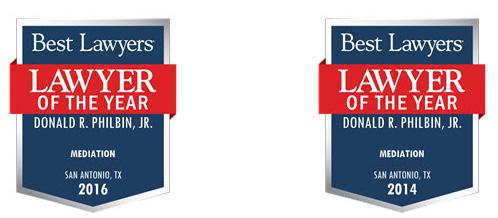
Mediation Booking: DonPhilbin.com


Scheduling Assistance: (210) 212-7100
“His grasp of the forces that drive a successful mediation is always spot on.”
“A real thinker and innovator”
“One of the smartest, most talented mediators I know”
“Lots of really innovative and clever ideas for helping people close”
“Works hard to ensure the parties are aware of the risks”
Chellie Thompson 512.293.9277
chellie@monarchmediainc.com
Publication Design and Production: Monarch Media & Consulting, Inc.
Editor in Chief Sara Murray
Articles Editor Natalie Wilson
Departments Editor Leslie Sara Hyman
Editor in Chief Emeritus
Hon. Barbara Nellermoe
Monarch Media & Consulting, Inc. 512.293.9277 | monarchmediainc.com

Design Direction
Andrea Exter Design Sabrina Blackwell
Advertising Sales
Chellie Thompson
Sara Murray, Chair
Pat H. Autry, Vice-Chair
Barry Beer
Amy E. Bitter
Ryan V. Cox
Paul Curl
Shannon Greenan
Stephen H. Gordon
Leslie Sara Hyman
Rob Killen
Thomas Lillibridge
Rob Loree
Lauren Miller
Curt Moy
Harry Munsinger
Hon. Barbara Nellermoe
Steve Peirce
Donald R. Philbin
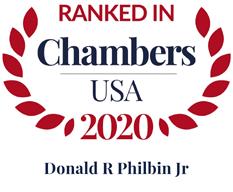
Clay Robison
Regina Stone-Harris
ileta! Sumner
Natalie Wilson
Ex Officio
Donna McElroy
Chellie Thompson
For information on advertising in San Antonio Lawyer: Call 512.293.9277
Chellie Thompson, Monarch Media & Consulting, Inc. chellie@monarchmediainc.com
100 Dolorosa, Suite 500, San Antonio, Texas 78205 210.227.8822 | sabar.org
OFFICERS / DIRECTORS
President
Donna McElroy
President-Elect
Steve Chiscano
Treasurer
Patricia “Patty”
Rouse Vargas
Secretary
Nick Guinn
Immediate Past President
Lawrence Morales, II
STATE BAR / SA BAR FOUNDATION
Directors (2021-2023)
Kacy Cigarroa
Tiffanie Clausewitz
Grant McFarland
Jaime Vasquez
Directors (2022-2024)
Emma Cano
Charla Davies
Charles "Charlie" Deacon
Jorge Herrera
Executive Director
June Moynihan
State Bar of Texas Directors
Tom Crosley
Lawrence Morales, II
San Antonio Bar Foundation Chair

Lawrence Morales, II
LOCAL BAR ASSOCIATIONS
Association of Corporate Counsel South/Central TX
Bexar County Women’s Bar Association
Christian Legal Society
Defense Counsel of San Antonio
Federal Bar Association—San Antonio
Mexican-American Bar Association—San Antonio
San Antonio Black Lawyers Association
San Antonio Criminal Defense Lawyers Association
San Antonio Trial Lawyers Association

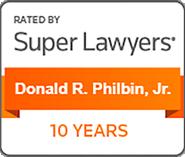
San Antonio Young Lawyers Association
TEX-ABOTA, American Board of Trial Advocates—San Antonio
William S. Sessions Inn of Court
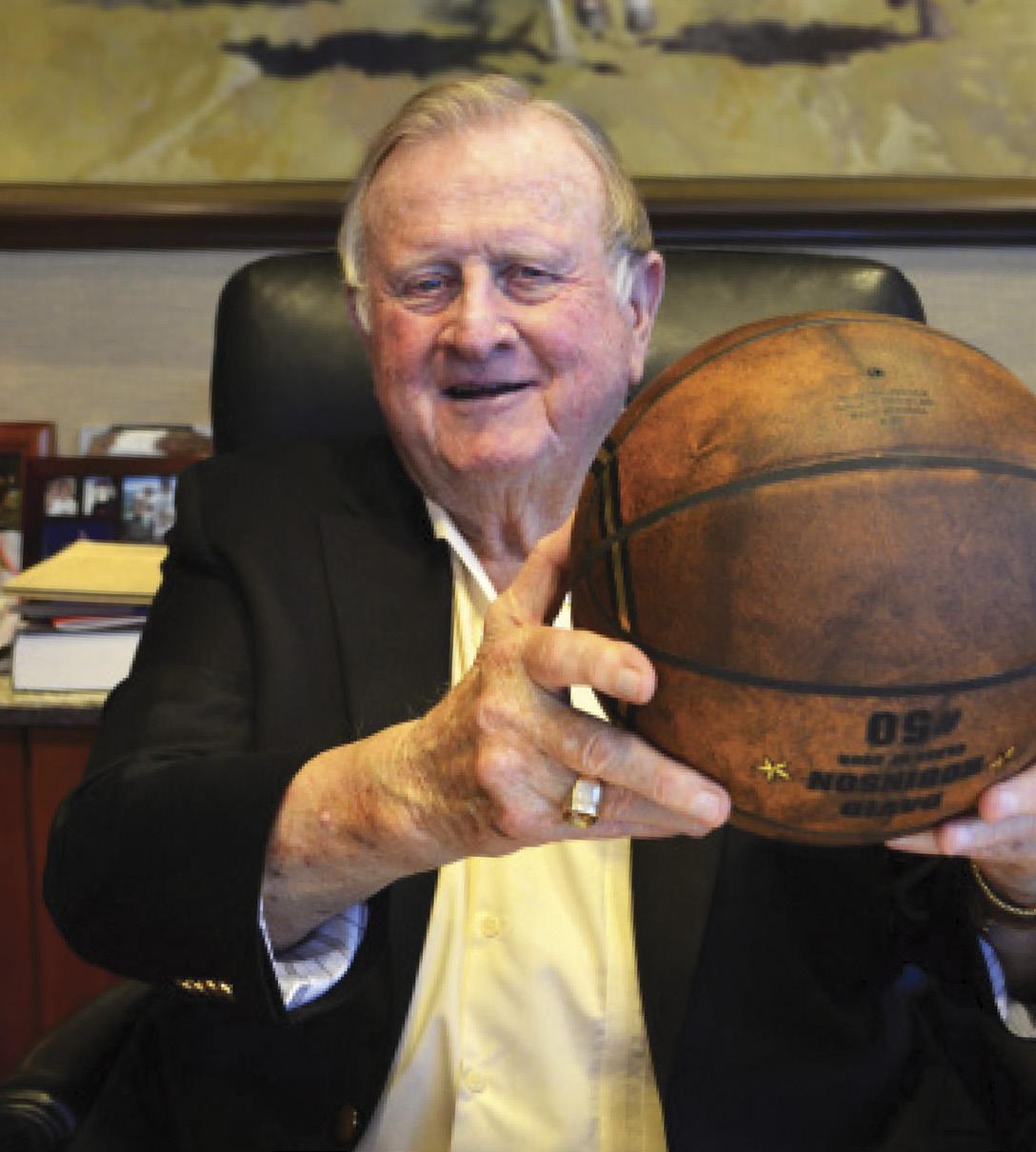
As the March-April 2023 issue of San Antonio Lawyer was going to press, the San Antonio community lost B.J. “Red” McCombs. Although Mr. McCombs was not a San Antonio lawyer, his business and philanthropy touched the San Antonio bar for decades. For a unique perspective on Red McCombs’ impact on our city, we proudly recommend Steve Peirce’s article entitled, “The Lawsuit That Saved the Spurs,” published in the July-August 2015 issue of San Antonio Lawyer. Editors issuu.com/sanantoniobar/docs/2015_red_ mccombss_article_julyaugsal_4_
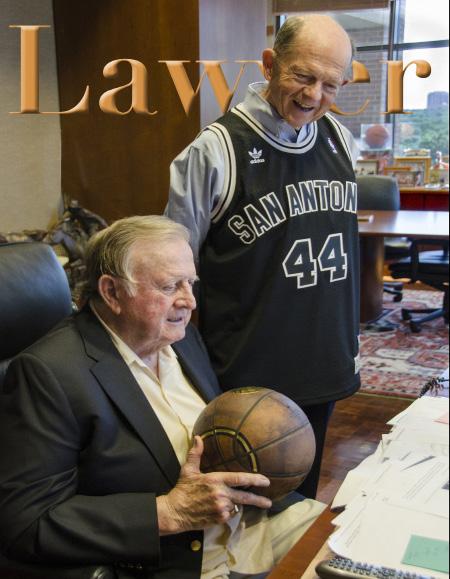
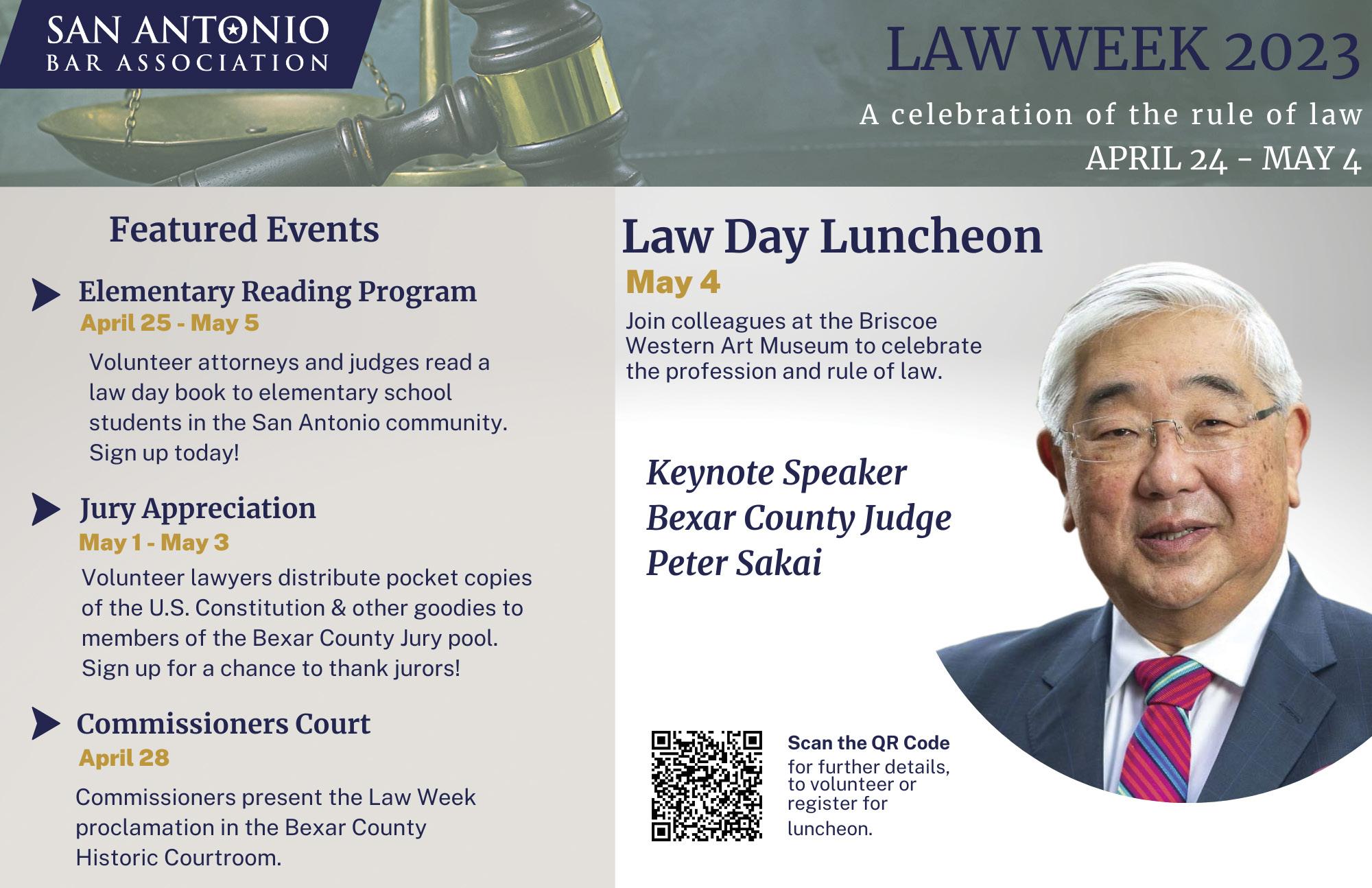
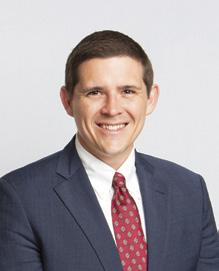

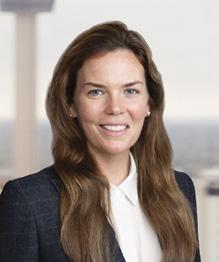 By SABA Staff
By SABA Staff
The San Antonio Bar Foundation is pleased to announce its 2023 class of twenty-seven elected Fellows. Established in 1984, the Foundation is the philanthropic arm of the San Antonio Bar Association (“SABA”). The Foundation, comprised of Fellows who serve as patrons of the charitable heart of the legal community, hosts civic education programs,
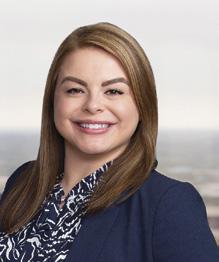
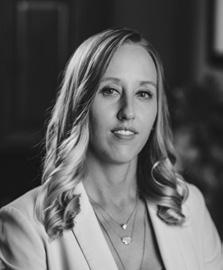
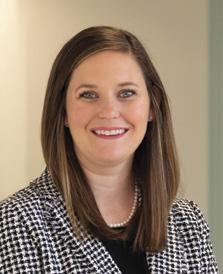
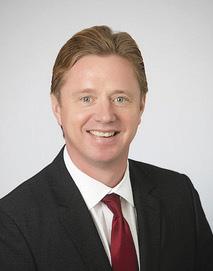
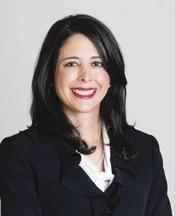
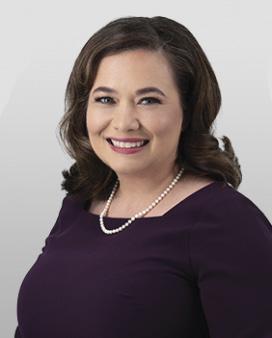

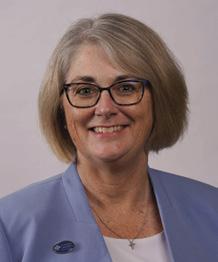
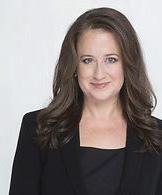
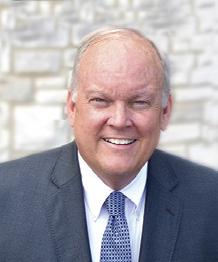
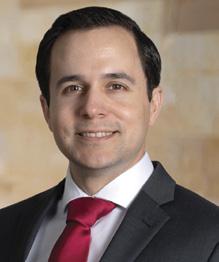
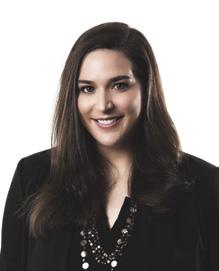
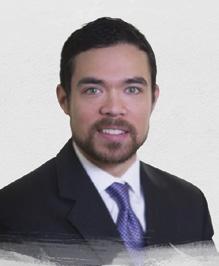
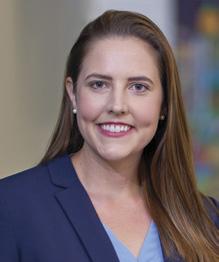

helps fill gaps in people’s access to justice, and supports the pipeline of future leaders in the San Antonio legal family.
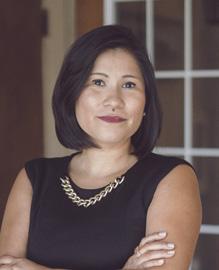
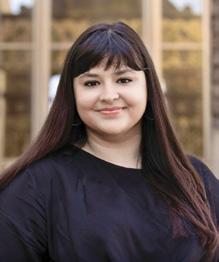
Selection as a Foundation Fellow is by nomination only and restricted to members of SABA. Fellows must demonstrate professional achievement, an exemplary reputation, and commitment to the legal community. Each year’s class is limited to no more than one third
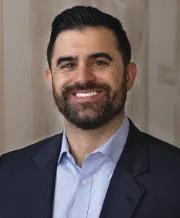
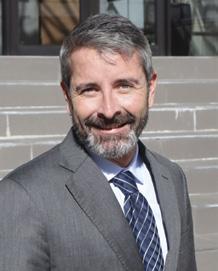


of one percent of SABA members and is subject to confirmation by the Foundation Board of Trustees. Today, the program is comprised of more than 650 Fellows who volunteer and financially support the Foundation’s programs and mission.
For more information about the Fellows Program, the Foundation, or SABA, please visit www.sabar.org
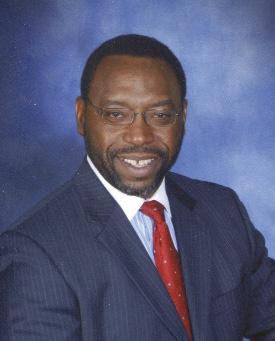
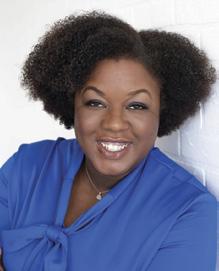


O n December 7, 2022, Bexar County lost a pillar of our legal community: Judge Solomon Casseb III passed away after a short and unexpected illness. Judge Casseb was a wise servant- jurist, a mentor to young lawyers, one of the best mediators in San Antonio, and a noble family law lawyer. In addition to a stellar career, Judge Casseb was a dedicated father, grandfather, and husband. He loved to take care of his three daughters and his six grandkids--from washing and gassing up their cars to being involved in their lives and helping them through major life decisions. They could always count on him. And most of all, Judge Casseb loved his wife of fifty years, Celeste. They were inseparable and he treasured his time with her. He was proud of his legal career and also loved music. He was an accomplished drummer in rock bands, from high school until recently. He was especially proud to be the drummer for The Court Jesters, “San Antonio’s Band of Lawyers,” for over 15 years. Judge Casseb’s daughters shared what they learned most from their Dad: “Treat everyone with respect, and that means everyone, whether a stranger on the street, waitress at a restaurant, a client, or opposing counsel. Even if you don’t agree, you can still be respectful.”
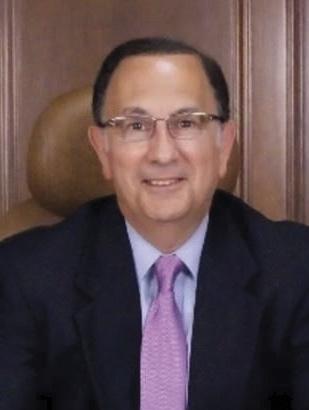

Lawrence Alan Beck died in March at the age of 71. Beck was a lifelong resident of San Antonio and a graduate of Alamo Heights High School. He received his undergraduate degree from the University of Virginia and his law degree from The University of Texas. He practiced law with his father, Marvin Beck, in the law firm of Beck and Beck PC in San Antonio, with an emphasis on commercial litigation. Beck was board certified in both business and consumer bankruptcy law.
Judge Solomon John Casseb, III died in December at the age of 74. Casseb was a graduate of Lee High School. He received his undergraduate degree from St. Mary’s University and his law degree from The University of Texas. He practiced law with Jim Pearl for many years. Governor Rick Perry appointed Casseb to the 288th Judicial District Court in 2008, and he served for more than ten years. Following his service as a district court judge, he continued to serve as a visiting judge, arbitrator, and mediator.
Allan K. Dubois died in January at the age of 76. The product of a military family that ultimately settled in San Antonio, Dubois attended Central Catholic High School and was Cadet Lieutenant

Colonel of one of its two ROTC brigades. He attended The University of Texas on an ROTC scholarship. In one very busy year, 1967, Dubois graduated from college, entered law school, and married. He received his law degree from The University of Texas in 1970. Following a stint on the East Coast, Dubois and his family returned to San Antonio. He was a civil trial attorney with the firm of Lang, Ladon, Green, Coghlan & Fisher for twentyfive years. Dubois served the legal community in many capacities, including as President of SABA and of the State Bar of Texas.
Warner Frederick Fassnidge died in October at the age of 85. The San Antonio native was reared in the Woodlawn Lake area of San Antonio and graduated from Thomas Jefferson High School. He received his undergraduate degree from Trinity University and his law degree from The University of Texas. He served as a real estate attorney for the City of San Antonio and taught Business and Real Property Law at UTSA.
Kermit W. Fox Jr. died in December at the age of 80. The Austin native received his law degree from The University of Texas in 1970. He was in private practice in San Antonio for thirty years.
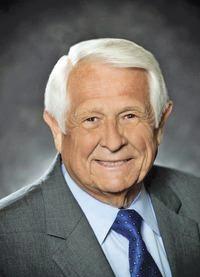
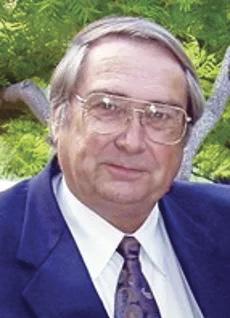
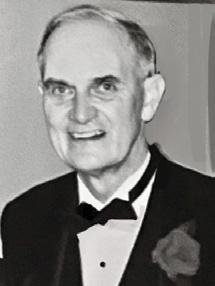
In the early 1990s, Sue Hall walked into my office to tell me about Allan DuBois’ donation to a Bexar County Women’s Bar fundraiser. During the conversation, Sue described Allan as “the nicest man she knew.” For three decades, I joined Allan and Pam DuBois at many San Antonio Bar and State Bar activities where one theme remained constant: “Allan DuBois was the nicest man I knew.” But Allan was not just nice—he was selfless and humble. Allan only wanted to serve and serve he did—always with Pam at his side. Allan’s commitment to others pervaded his legal career and made him an outstanding trial attorney.
When Allan was sworn in as President of the State Bar of Texas, his entire family was there. His grandchildren led the pledge of allegiance, and Maddy, then a very young granddaughter, sang the national anthem. “Surrounded by family” was Allan’s life.
Every Texas attorney knows Allan’s recovery story and message of hope. Allan made it “ok” for Texas attorneys to not only seek help; but also, to talk about their recovery experiences so that others would seek help.
Reflecting on the life of Allan DuBois, my tears are met with another theme—Allan made me a better person. I am sure that this belief is shared by every Texas attorney and many others in the communities he served.

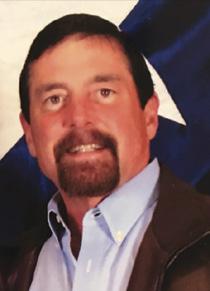

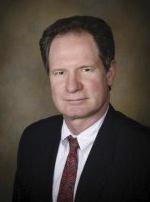 Sara Dysart
Sara Dysart
Michael Ray Hedges died in October at the age of 68. Hedges grew up on a cotton farm between Springlake and Olton, Texas. He graduated with honors from Texas A&M University (1976) and received his law degree from Baylor University School of Law (1979). He was a longtime civil litigator with the firm of Goode, Casseb, Jones, Riklin, Choate & Watson and a member of the American Board of Trial Attorneys.
A. L. Hernden died in March at the age of 83. Born in San Antonio, A.L. attended Central Catholic High School, St. Mary’s University, and St. Mary’s University Law School. He was a fearless, tireless, and imaginative lawyer with a sense of humor. The local bar is populated by many who went to law school under his tutelage.

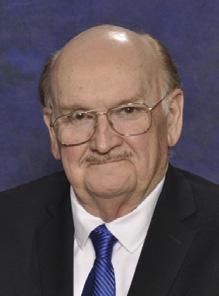
Royal W. King, Jr. died in February at the age of 97. He was a graduate of Thomas Jefferson High School and The University of Texas. He received his law degree from St. Mary’s University School of Law. King served in the Pacific Theatre during the Second World War. As an attorney he worked in the oil and gas and banking industries.
Judge Alvaro T. Garza died in July at the age of 81. The Laredo native received his undergraduate degree from The University of Texas and his law degree from St. Mary’s University. He was among the first attorneys with the Mexican American Legal Defense and Educational Fund and later served as a District Director of the Equal Employment Opportunity Commission. Subsequently, Garza had a private law practice in Laredo prior to his appointment in 1994 by President Clinton as a Federal Administrative Law Judge.
Frank Young Hill, Jr. died in April at the age of 90. The Laredo native was a thirdgeneration Texas attorney. He was the grandson of Lucius David Hill, whom President Woodrow Wilson had appointed as International Boundary Commissioner in 1917 to oversee the U.S./ Mexico border. Hill received his undergraduate degree from the University of the South in Sewanee (1953) and his law degree from St. Mary’s University School of Law (1959). Hill served in the United States Air Force as an Intelligence Officer during the Korean War. Following law school, he served as an Assistant Criminal Defense Attorney in Bexar County and later as briefing attorney for the Texas Court of Criminal Appeals. Hill practiced law for nearly fifty years in the San Antonio/Hill Country area.
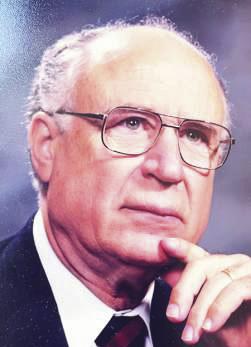
Roger D. Jones died in March. The Ohio native received his law degree from the University of Toledo in 1976. After law school, he joined the United States Army and was stationed at Fort Hood. Upon separation from the Army, he entered the private practice of law in San Antonio.
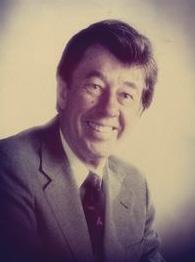
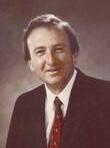
Douglas Wayne Sanders died in December at the age of 66. Sanders was born in Baytown. Sanders was an honors graduate of both The University of Texas (1978) and Bates Law School at the University of Houston (1981). In the early 1990’s Sanders became a commercial litigator with the San Antonio law firm Oppenheimer, Blend, Harrison & Tate. He retired from the firm in 2005. In more recent years, Sanders was in private practice in Horseshoe Bay and embarked upon a political career which included service as Chairman of the Llano County Republican Party.
Leonard Wayne Scott died in September at the age of 83. Scott was raised in Lockhart. He attended Southwest State Teachers College, earning both undergraduate and graduate degrees in American Studies. He received his law degree from The University of Texas. He entered the practice of law in 1965 with the Sheehy and Lovelace firm in Waco, while also teaching as an associate professor at Baylor University School of Law. In 1971, Scott accepted a position as a full professor with St Mary’s University School of Law and in 2021 received the fifty-year pin for his service. Board certified in civil appellate law, Scott was the Editor of the Texas Lawyer’s Weekly Digest and its successor the Texas Lawyer’s Civil Digest, for more than thirty years. He was a driving force in the creation of the External Advocacy Program at St. Mary’s University.
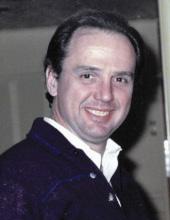
L. Wayne Scott was a lawyer’s lawyer. The highly respected St. Mary’s Law Professor always made time for his students and poured his passion for the law into everything he did. His fifty-plus years of experience in the field of conflict resolution, and as Founder and Director of Conflict Resolution Studies at St. Mary’s Law, greatly contributed to his ability to provide first-hand experience to his students, and enriched their understanding of ADR, negotiations, evidence, Texas Civil Procedure, Federal Courts, and Appellate Practice. His tenure at St. Mary’s Law was nothing short of extraordinary and his legacy includes his influence over multiple generations of law students and his role in creating the Conflict Resolution Institute. He also served as the primary architect of St. Mary’s Law’s external Advocacy Program whose National ADR team is currently ranked #14 by U.S. News World Report and #11 by the ABA. His leadership helped create one of the top advocacy programs in the country.
North O. West died in January at the age of 81. West was born in San Antonio on Veterans’ Day. He was a 1959 graduate of Harlandale High School. He was a member of the Corps of Cadets at Texas A&M University, from which he graduated in 1963. He received his law degree from St. Mary’s University in 1966. He served in the United States Army from 1966 to 1968 as a Military Intelligence Officer during the Vietnam conflict. Following military service, he joined his father’s law practice, West & West, Attorneys, where he remained until his death.
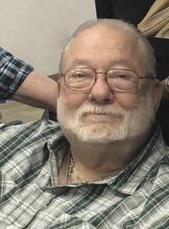
John F. Younger, Jr. died in August at the age of 82. Younger was raised in Midland and graduated from Midland High School. He received his undergraduate degree from Yale University in 1963 and his law degree from The University of Texas in 1966. He served with the United States Marine Corps from 1967-1969. Younger was Board Certified in Personal Injury Trial Law, a Life Fellow of the Texas Trial Lawyers Association, and a member of the American Board of Trial Advocates.
North Ottis West was destined to be a great lawyer. His legal roots started long before he became an attorney. His grandfather Ancil Sylvanis West (licensed 1924) was Dean of the San Antonio Public School of Law whose facilities and books would help start St. Mary’s School of Law. North’s father Ottis Ancil West (licensed in 1934) was the youngest Bexar County Justice of the Peace (age 26), and while he was away during WWII, Ottis’s wife Laverna served his term and became the first female Justice of the Peace in Bexar County, Texas.
After being a member of the Corps of Cadets, and graduating from Texas A&M University and St. Mary’s School of Law, North served from 1966-1968 in Vietnam as an Intelligence Officer. Thereafter North came home in 1968 to join West & West Attorneys with his father.


Robert Carlyle Scott died in August at the age of 76. He received his law degree from The University of Texas in 1973. Scott devoted much of his time to nonprofit organizations and his church. He led the building committee that planned the move of Alamo Heights United Methodist Church from its old location on Broadway to its current home on Basse Road.

Robert E. Zepeda died in March at the age of 72. The San Antonio native graduated from Fox Tech High School in 1968. He attended St. Philips College and was its first Latino Student Body President. At St. Philips, Zepeda enrolled in a class taught by Frank Madla, a longtime Democratic member of both the Texas House and the Texas Senate. With encouragement from Madla and others, Zepeda attended The University of Texas, from which he graduated in 1973 and St. Mary’s University School of Law, from which he graduated in 1976. Zepeda’s legal career spanned forty-six years.

Named after the direction on a compass, North guided generations of San Antonio families during his fifty-five years of practice. He served as general counsel for Bexar County Appraisal District, Bexar Metropolitan Water District (thirty years) and Harlandale ISD (forty years). Whether you were rich or poor, your case big or small, North treated each with kindness and care. If you knew North, you knew how smart and gifted he was and what a brilliant mind he had. There will never be another North O. West.
An inveterate storyteller, clients “in the know” would schedule an appointment for two hours: the first hour discussing the legal issue and the second hour listening as North would say: “Let me tell you a quick story.” If it involved Aggies, it would be longer and your bill would have a line item “discounted for stories.” North strived, and succeeded, to be a man of integrity in all areas of his life. He believed in being honest and loyal in all matters. This was especially true of the “troops” who were by his side for over twenty years, with some serving for more than fifty years, including his son and daughter.
A true keeper of the spirit as an Aggie, attorney, and family man, he will be missed. WHOOP! WHOOP!


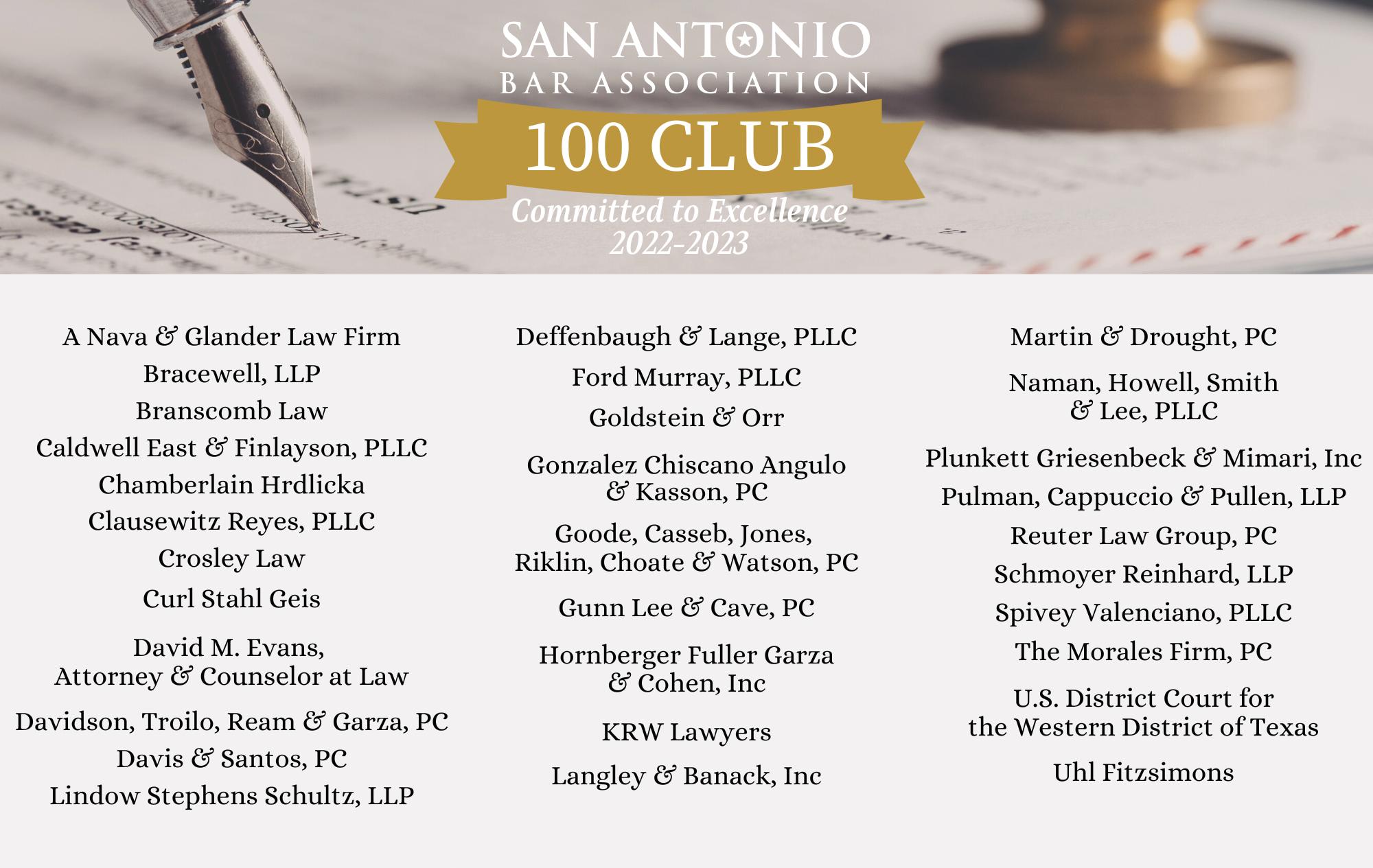
The murder of Marilyn Sheppard in her bedroom during the early morning hours of July 4, 1954, remains one of America’s most notorious unsolved crimes. Young and beautiful, the mother of one child and pregnant with another, her bludgeoning death transfixed a nation. Every circumstance of her death and the nine-week trial of her husband that followed became fodder for an unprecedented crush of newspaper coverage. In what the United States Supreme Court later called “a carnival,” hundreds of reporters took up every inch of the Cleveland courtroom, reporting every line of testimony, and tracking the judge, jury, lawyers, and witnesses from home to court and back again. No one moved in the corridors without being questioned. Newsmen handled the evidence as it was offered during the proceedings. They set up a television station in a room next to the jury.
A preliminary hearing was initially held before Judge William Thomas on August 16th.
Presented with no evidence by the prosecutor, he ordered Sam Sheppard released on bail. The newspapers howled. The following day, the prosecutor sought an indictment from the grand jury, and the newspapers printed the grand jury testimony, normally sealed. Even more, the pictures, names, and addresses of grand jury members were published in the Cleveland Press. Grand jurors found themselves telephoned and stopped on the street. The grand jury obediently returned an indictment against Sam, and grand jury foreman Bert R. Winston was quoted as saying, “The pressure on us has been enormous.”1
Sam’s trial commenced in October 1954, amidst this circus of media attention. It was also two weeks before the November general election of 1954, at which the Prosecutor John Mahon was a candidate for judge, and the trial judge, Judge Edward Blythin, was up for reelection. Twenty-five days earlier, seventy-five individuals were called as prospective jurors. All three Cleveland newspapers published their
names and addresses, so that when eighteen days of jury selection began on October 18, 1954, every prospective juror told the court that they had received letters and telephone calls, both known and anonymous, regarding the trial.2
From the beginning, the press had free range of the courtroom. The courtroom itself was a modest 1,200 square feet, including four rows of seats behind the railing, or bar, that separates the spectators from judge, jury box, and the well where the prosecution and defense were seated. The first three rows of audience seats were assigned to the press, and only the last row was assigned to family. When those three rows proved insufficient for all of the media representatives that clamored for seats, the extraordinary remedy was adopted
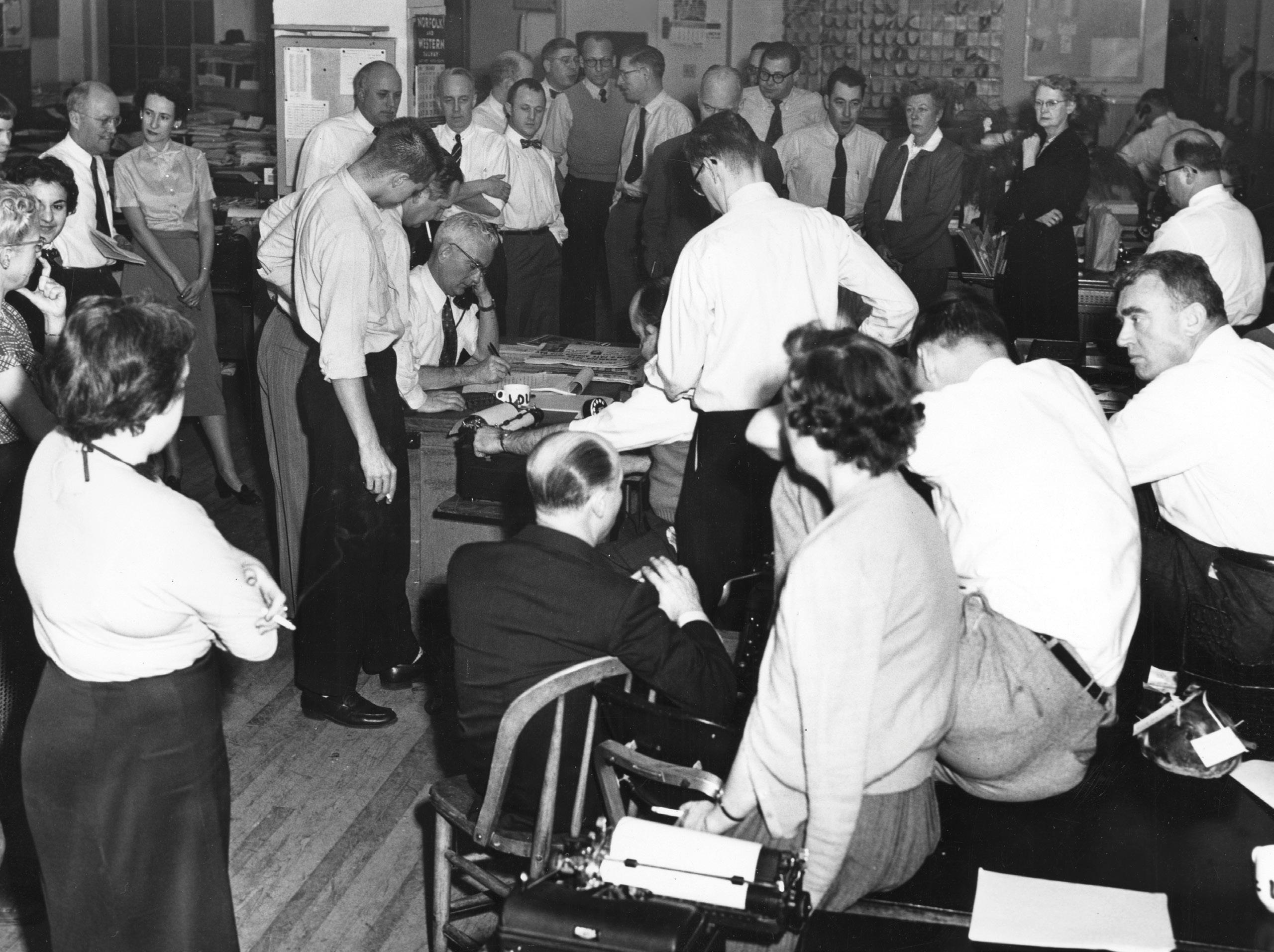
continued from page 12
His pretrial statements that there was no proof of anyone else having been in the Sheppard house at the time of the murder had been published by the local newspapers.
of placing a twenty-foot-long temporary table in the space between the bar and the tables occupied by the prosecution and defense, and packing that table with reporters. Seated where they were, the press could hear the lawyers talk to each other and to Sam, and they could view and handle all of the evidence. One end of the extemporary press table ended only three feet from the jury box.
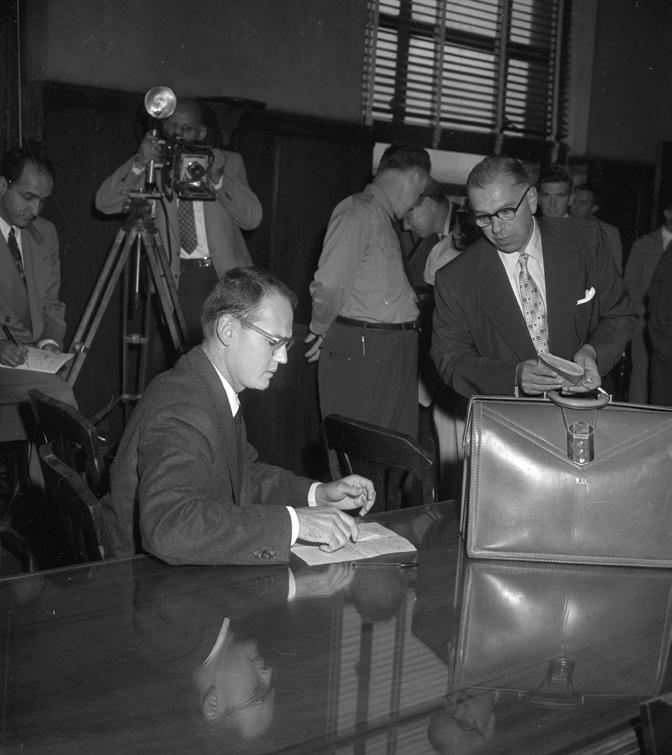
Representatives of the news media also used every room on the courthouse floor, including the room where cases were ordinarily called and assigned for trial. Private telephone lines and telegraphic equipment were installed in these rooms so that reports from the trial could be speeded to the papers. Station WSRS was permitted to set up broadcasting facilities on the third floor of the courthouse next to the jury room, where the jury rested during recesses in the trial. Newscasts were made from this room throughout the trial, even while the jury deliberated.3
At twenty-eight days of witness testimony, the trial of Sam Sheppard was said to have been the longest criminal trial on record in the United States at the time.4 Sam was represented by the legal team of William Corrigan; Corrigan’s young son Bill Jr., recently graduated from law school; and attorneys Fred Garmone and Arthur Petersilge. The prosecution team included Mahon, who was elected to a judgeship in the middle of the trial; Gertrude Bauer, whom Mahon would marry days after the trial ended; and Saul S. Danaceau and Thomas J. Parrino, both later judges. Also at the prosecution table was Cleveland Police Inspector James McArthur.
The prosecution began with photos of the murder of Marilyn projected on a screen in the courtroom, accompanied by testimony by Dr. Lester Adelson, the Chief Pathologist in the Coroner’s office who had conducted the autopsy on Marilyn and testified about the injuries she suffered. A wax model of Marilyn’s head was used to demonstrate the murder blows. Neighbors Don and Nancy Ahern each testified how Sam had fallen asleep while they watched a movie the evening before the murder, still wearing his jacket, which he was not wearing after his fight with the intruder. The jacket was found neatly folded on the daybed, a fact the prosecution offered as evidence that Sam’s actions on the night of the murder were calm and unhurried. Nancy Ahern testified that Marilyn had confided to her a rumor that she had heard that Sam was considering a divorce but had decided against it.
Esther and Spen Houk were called to testify regarding their meetings with Sam on the morning of July 4. Esther was asked if Sam’s shoulder was dry when she touched it, and she answered that it was, to the point that he was not wet when he returned from his altercation with the bushy-haired assailant at the beach. Mayor Houk, over objections, was allowed to testify that he had voluntarily taken a lie detector test in the days that
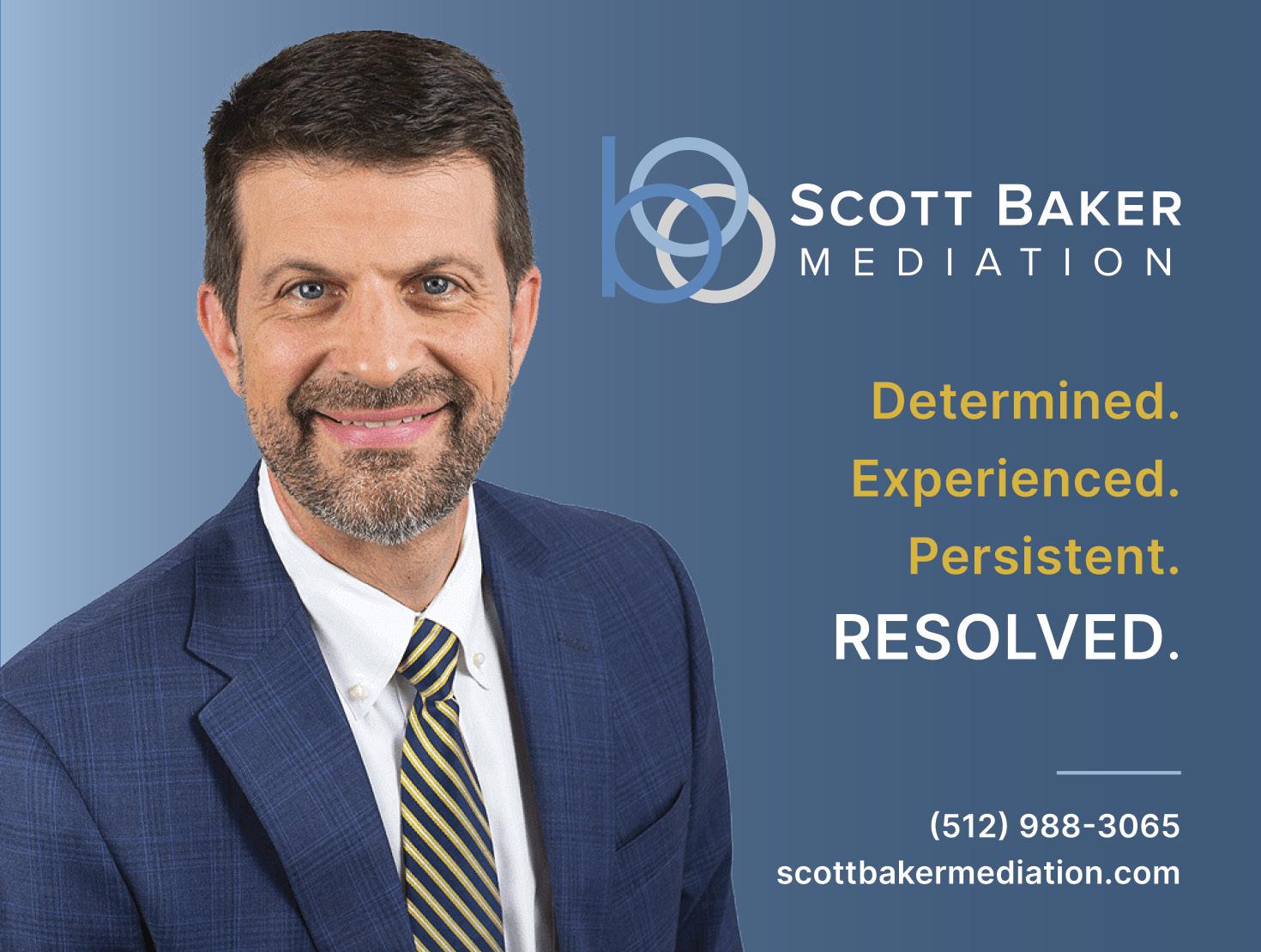
followed Marilyn’s murder, in sharp contrast to Sam’s well-published refusal to do the same. Their son, Larry Houk, testified about finding a green bag in the Sheppard yard that contained Sam’s watch and jewelry, which the prosecution considered a ruse.
The Houks were followed to the witness stand by Bay Village police officers Drenkhan, Hubach, and Eaton, and firemen Callihan and Sommer. Then came Cleveland officers Dombrowski, Poelking, Grabowski, Gareau, and Schottke, along with county deputy sheriffs Rossbach and Yettra. The officers testified as to their actions on the morning of the murder, and that there was no sign of forcible entry to the Sheppard home.
Coroner Dr. Gerber then came to the stand, and he dropped a bombshell. He testified that his examination of the bloodstains on a pillowcase on Marilyn’s bed were made by the imprint of a long, hinged, two-pronged weapon, which he identified as a surgical instrument. Because no such weapon or instrument had been found in or outside the house despite an intensive search, including the dredging of Lake Erie in front of the Sheppard home, he could not describe the instrument with greater particularity. Nevertheless, his testimony strongly implicated Marilyn’s surgeon husband as the perpetrator. Then came Susan Hayes, who testified regarding her affair with Sam, with its damaging effect on his credibility after his
continued on page 14
continued from page 13
earlier denial of the relationship with her. The defense’s presentation, in turn, was light on scientific evidence. The law in 1954 did not require prosecutors to turn over evidence in a trial to the defense team, and the Sheppard home had been sealed against examination by experts hired by Sam and his attorneys. Evidence of the presence of a thirdparty intruder that might have cast doubt on the guilt of Sam, including a trail of blood left by the assailant, were inaccessible to those
experts. Though bleeding profusely, Marilyn had never escaped the bedroom, and Sam had no open wounds.
Instead, the defense featured medical witnesses who testified that Sam’s injuries on the morning of the murder were of a type inconsistent with the struggle that Marilyn may have put up, and character witnesses who testified in Sam’s defense. Dr. Charles Elkin, who had examined Sam on the first days following the murder, and five other doctors, a dentist and several nurses were called by the defense for a thorough detailing of Sam’s
• Experienced, having conducted more than 25,000 mediations since 1989 with more than 850 years’ experience practicing law
• Committed to the mediation process and devoted to the ethical practice of law
• Covered by the AAM Member Insurance Group Policy, an arbitrator and mediator professional liability insurance
& Estates
For more information, contact the local San Antonio Chapter. www.attorney-mediators.org/SanAntonioChapter
Gary Javore - gary@jcjclaw.com
John Boyce, III 210.736.2224 jkbiii@boyceadr.com
Leslie Byrd
210.229.3460 leslie.byrd@bracewell.com
Debbie Cotton 210.338.1034 info@cottonlawfirm.net
Michael Curry
512.474.5573 mcmediate@msn.com
Aric J. Garza 210.225.2961 aric@sabusinessattorney.com
Charles Hanor
210.829.2002 chanor@hanor.com
Gary Javore
210.733.6235 gary@jcjclaw.com
Daniel Kustoff
210.614.9444
dkustoff@salegal.com
J.K. Leonard 210.445.8817 jk@jkladr.com
Cheryl McMullan,
210.824.8120 attyelder@aol.com
Dan Naranjo 210.710.4198 dan@naranjolaw.com
Patricia Oviatt 210.250.6013 poviatt@clarkhill.com
Jamie Patterson 210.828.2058 jamie@braychappell.com
Diego J. Peña 817.575.9854 diego@thepenalawgroup.com
Don Philbin 210.212.7100 don.philbin@adrtoolbox.com
Edward Pina 210.614.6400 epina@arielhouse.com
Richard L. Reed, Sr. 210.451.6920 rreed@coatsrose.com
Wade Shelton 210.349.0515 wshelton@shelton-valadez.com
Thomas Smith 210.227.7565 smith@tjsmithlaw.com
Richard Sparr 210.828.6500 rsparr@sparrlaw.net
John Specia 210.734.7092 jspecia@pg-law.com
Phylis Speedlin 210.405.4149 phylis@justicespeedlin.com
Lisa Tatum 210.249.2981 ltatum@tatum-law.com
William Towns 210.819.7453 bill.towns@townsadr.com
James Upton 361.884.0616 jupton@umhlaw.com
injuries, which included injuries to his spine and swelling at the base of the skull. The prosecution in response characterized those injuries as self-inflicted. Members of Sam’s family testified. A long string of character witnesses testified to Sam’s good nature and the general normality of his relationship with Marilyn. Members of her family also testified as to her buoyant mental state in the days preceding the murder in an attempt to deflect any suggestion of marital discord.
Next the defense elicited the testimony of people who had been in the area the night of the murder. Various neighbors testified as to when lights went on and off at the residence. Fishermen from the lake testified to seeing teenage boys on the park pier early in the morning, and teenagers testified as to activities and movements in the immediate area. Drivers who had seen a stranger walking on Lake Road in the morning were called to give their testimony. Then Sam testified on his own behalf, taking the stand for three days. Under cross-examination from the prosecution, his story of the events of that night did not change.5 Both sides made their closing arguments, Prosecutor Mahon concluding, “Why, this house was full of phantoms that night, I think, ladies and gentlemen….”
During the course of the trial, all three Cleveland newspapers maintained their
continued on page 16
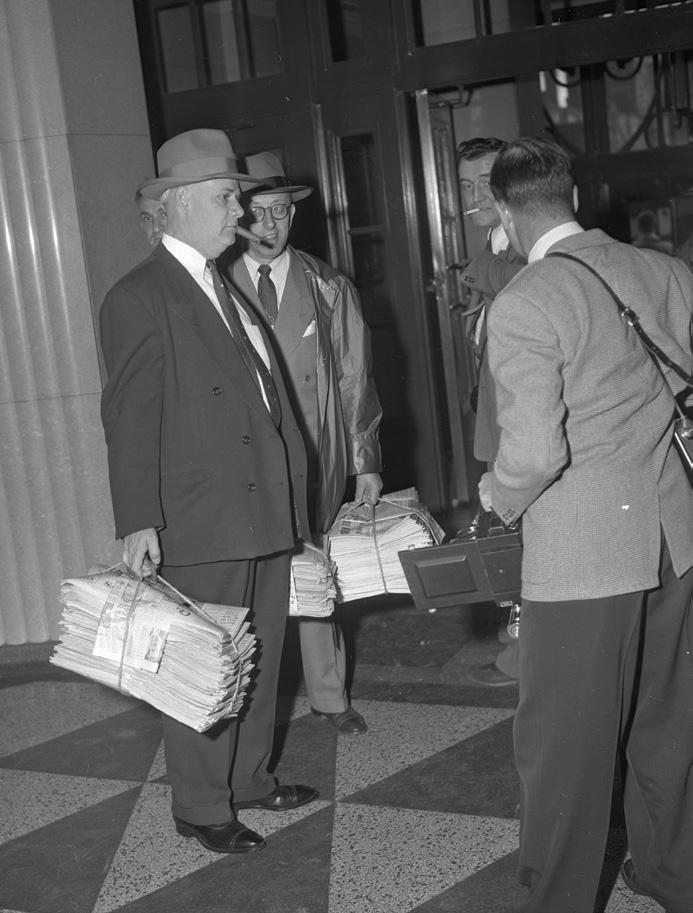




continued from page 14
relentless call for Sam’s conviction. Syndicated columns and news agency reports made the case almost as well-known in every community of the nation as it was in Cleveland. In the middle of the trial, national broadcaster Walter Winchell aired a story about a woman under arrest in New York who claimed she had a child by Sam. It turned out to be false.6

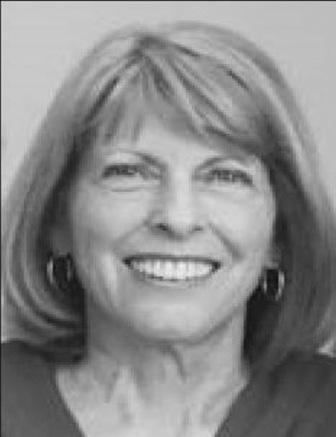
After five days of deliberation, on December 21st, the jurors came back with a verdict of second-degree murder, intentional but without premeditation. Dorothy Kilgallen—known for her celebrity role on the television game show What’s My Line?-covered the trial and expressed shock at the guilty verdict. But it wasn’t until years later that Kilgallen also described how the judge called her into his chambers on the first day of the trial. They shook hands, and he asked her, “What brings you to Cleveland?” She replied that she was there to cover the trial and told Judge Blythin that she was intrigued by the mystery of who had committed the murder. The judge responded, “Mystery? It’s an open and shut case . . . . He is guilty as hell. There is no question about it.”7
The Sheppard family was, as expected, crushed and distraught by the jury’s verdict. Sam’s mother, Ethel, shot herself to death three weeks later. His father, Richard, died of stomach cancer eleven days after Ethel. By contrast, Prosecutors Bauer and Mahon, the latter now a judge elect, were able to celebrate. The two married before Christmas. Mostly, though, the trial was a bonanza for the local newspapers. Before the murder, from March 1953 to March 1954, the Cleveland Press had suffered a circulation decline.8 But all three Cleveland newspapers reported extraordinary circulation gains during the Sheppard trial, and the Cleveland Press sold 30,000 extra copies on the day of the verdict.9
1Cynthia L. Cooper and Sam Reese Sheppard, Mockery of Justice 93 (New York: Onyx 1997)
2Sheppard v. Maxwell, 384 U.S. 333, 342 (1966).
3Id. at 343.
4Jack P. DeSario and William D. Mason, Dr. Sam Sheppard on Trial 5 (Kent, Ohio: Kent State University Press, 2003).
5Cooper & Sheppard 106-10.
6Id. at 69.
7Id. at 46.

8Editor & Publisher Magazine (January 8, 1955).
9Cooper & Sheppard 114.
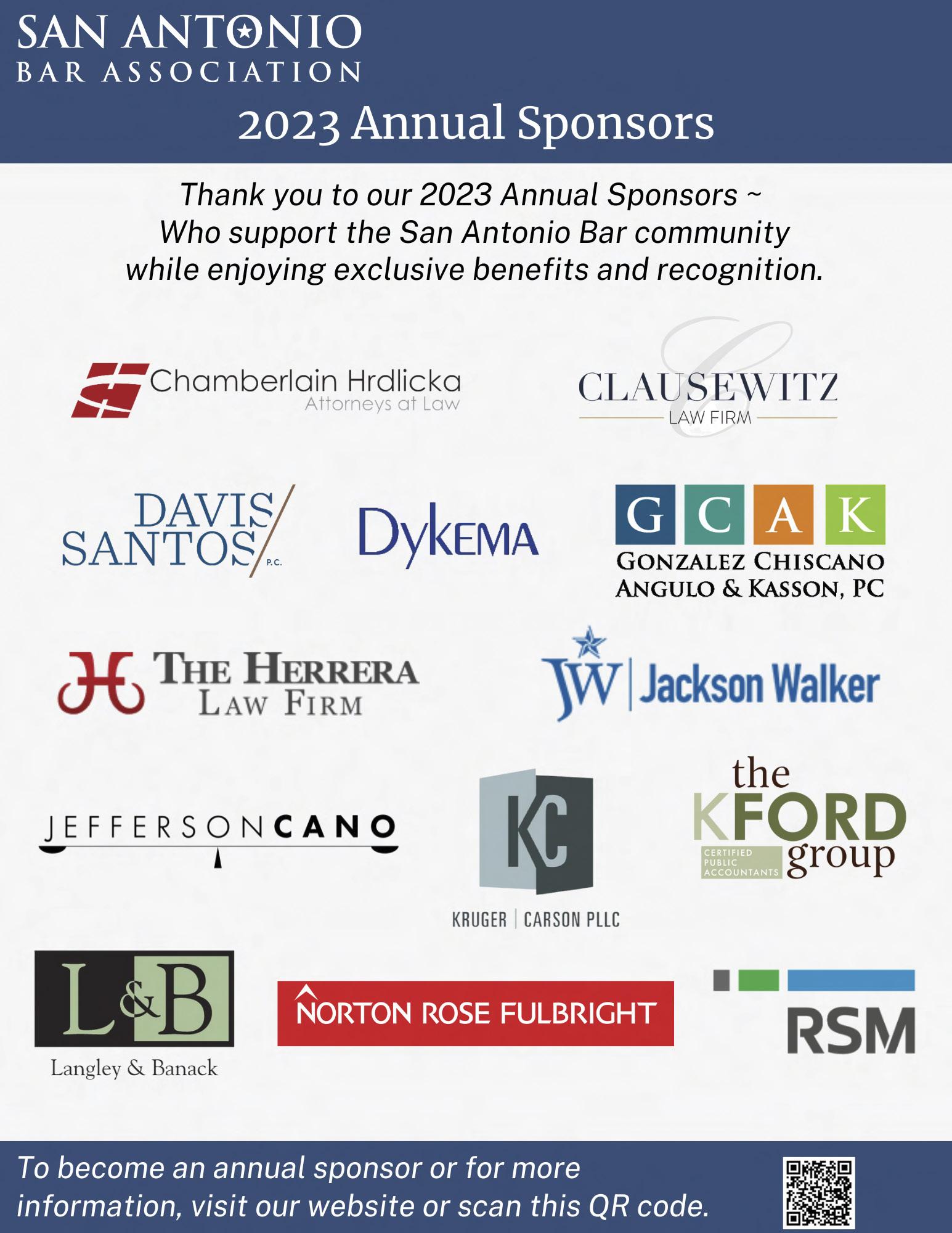
John Marshall was born in a log cabin on September 24, 1755, in Germantown, Virginia. His formal education included one year of grammar school and six weeks of law school.1 From this humble beginning, Marshall became Chief Justice of the Supreme Court of the United States.2 Before Marshall became Chief Justice, the Supreme Court had little power and lacked prestige. Marshall transformed the Court into a powerful branch of the federal government and established the Court as the arbiter of federal statutory disputes and the interpreter of the United States Constitution.

After the American Revolutionary War began, Marshall joined the Continental Army and fought with General George Washington. While in the army, he visited Yorktown, Virginia, where he met fourteen-year-old Mary Ambler. He later enrolled in law school at the College of William and Mary to be near Mary. There, he attended lectures by George Wythe3 and read Blackstone’s Commentaries and books by David Hume and other enlightenment thinkers. After six weeks, Marshall learned Mary was moving to Richmond, so he withdrew from law school and followed her. After Marshall passed an examination, Virginia admitted Marshall to practice law in Virginia. Then-Governor Thomas Jefferson signed Marshall’s law license. When Mary turned sixteen, Marshall asked her to marry him, and to his surprise, she refused. She changed her mind later that day and agreed to marry him.
Marshall was a delegate to the Virginia convention for the ratification of the United States Constitution. Other prominent delegates included James Monroe, James Madison, Richard Henry Lee, Edmund Randolph, and George Wythe. In supporting the Constitution, Marshall focused on the President’s powers as Commander in Chief under Article II, and the authority of the federal courts under Article III. He favored a strong federal government to defend the country and argued that states’ rights would be protected because George Washington would be the first President.
In spring 1797, President John Adams asked Elbridge Gerry, Charles Pinckney, and John Marshall to negotiate an end to French seizures of American shipping. The diplomats failed to obtain an agreement, in part because the French stalled for time, hoping to defeat the British. The French were willing to stop harassing American shipping, release captured American crews, and pay reparations for the cargos seized if the Americans paid the Marquis de Talleyrand—the French Foreign Minister—a large bribe and loaned money to France. But the Americans were unwilling to meet those terms. President Adams became angry with Talleyrand’s treatment of the American diplomats and asked Congress for money to build ships and fortify American defenses.
Congress refused to appropriate money until the diplomats’ dispatches were published,
so Adams released the diplomatic journal under the title “XYZ papers.” The dispatches showed that France had caused the impasse by making unreasonable demands on the American delegation,4 causing Americans to turn against France. When Marshall returned to America, he was hailed as a national hero for his firm stance against French demands. He told President Adams that the French did not want to start a war with America because they were already too busy fighting most of Europe.

A few years later, President Adams fired his Secretary of State and nominated Marshall to replace him.5 As Secretary of State, Marshall had extraordinary authority: his office was the primary administrative agency of government at that time. The agency issued passports, copyrights, and land patents, and oversaw the Justice Department because the Attorney General served only as the President’s legal advisor. The agency also ran the mint, handled the census, supervised United States territories, and published government documents.
Marshall faced many problems as Secretary of State. His most pressing problem was how to deal with debts Americans owed Britain. The British ambassador wanted the United States government to pay England a lump sum to cover the debts, but Marshall worried that France would be angry if America paid money to England while the two European countries were at war. Marshall informed the British ambassador that the United States would pay no more than $2.5 million, much less than
the claims were worth. This tactic delayed the negotiations for months. The United States finally agreed to pay £600,000 to settle Tory debts, a fraction of the amount owed.
The next problem Secretary Marshall faced was the capture of American ships and the seizure of United States citizens to serve as crewmen on British Navy ships. Marshall instructed his ambassador to tell England that the United States wanted to remain neutral between France and England but stood ready to defend its shipping if necessary. This position was a bluff because the American Navy was small compared to the massive British Navy. England refused to stop detaining United States ships and impressing American sailors. Marshall could do little to stop it. Ultimately, disregard for the rights of United States ships on the high seas triggered the War of 1812 with England.
Marshall also had to deal with French harassment of American shipping, but those negotiations stalled while Napoleon won repeated victories over the European coalition. After many months of hard bargaining, the French finally agreed to stop raiding American shipping, although compensation for past confiscations was delayed for years.
Marshall’s final problem was how to handle the Barbary pirates who sailed from the North African coast and captured American ships. The pirates claimed to be customs agents of North African monarchs collecting fees for passage through the Mediterranean. They wanted payment to stop harassing American shipping. President Washington had paid bribes because he had more pressing problems with the French and British. Marshall thought Washington’s tactic sensible because it saved the United States millions of dollars in naval costs. President Adams agreed. However, when Jefferson became President, he declared war against the Barbary Pirates rather than pay bribes. The United States Navy and Marines soundly defeated the pirates, but at a huge cost.6
In 1800, Adams and Jefferson competed for the Presidency and Jefferson won. Before leaving office, Adams nominated, and Congress confirmed, Marshall to serve as Chief Justice of the Supreme Court to replace Chief Justice Ellsworth who resigned due to health problems.7 At that time, the Court
continued on page 20
Defense costs $67,000
Settlement + $0
Total out-of-pocket = $67,000
* Based on actual claim handled by TLIE.

Before Marshall became Chief Justice, the Supreme Court had little power and lacked prestige. Marshall transformed the Court into a powerful branch of the federal government and established the Court as the arbiter of federal statutory disputes and the interpreter of the United States Constitution.
handled mostly admiralty cases and disputes between the states, because there were few federal statutes at the time, and state law governed most legal disputes.
When Adams nominated Marshall, the federal circuit courts of appeals did not exist. Thus, Supreme Court Justices travelled to the states to hear cases, in addition to hearing cases in Washington, D.C. Before Jefferson took office, though, Congress enacted a law establishing circuit courts, eliminating the need for Supreme Court Justices to ride circuit throughout the United States.
Marshall opened his first session of the Court on February 2, 1801, in the congressional office basement. Other members of the Court included William Cushing, William Paterson, Samuel Chase, Bushrod Washington, and Alfred Moore. Marshall wanted to build a consensus within the Court to withstand pressures he foresaw from Jefferson and Congress, so he befriended each Justice and learned about their personal lives. He even moved the Justices into the same boarding house and met with them every evening over a glass of Madeira.
Marshall served on the Court for thirty-
four years and introduced the practice of issuing majority opinions rather than allowing each Justice to write individual opinions, as done in England. During his tenure, the Court issued over one thousand opinions, and Marshall authored more than half of them. Marshall believed the United States Constitution should evolve to meet the needs of later generations, and he strongly defended the separation of powers, the sanctity of contracts, and the supremacy of federal law over state law.

The Marshall Court’s first important case occurred after the USS Constitution captured the armed French vessel Amelia and took the ship to New York harbor as a prize. The Constitution’s commander, Captain Talbot, claimed half the value of the ship and cargo, even though a neutral Hamburg merchant named Seeman owned the cargo. In the dispute that followed, Alexander Hamilton represented Captain Talbot, and Aaron Burr represented Seeman. A federal district court ruled in favor of Talbot, but the court of appeals ruled in favor of Seeman. The Supreme Court accepted the case for final resolution.
Marshall wrote the opinion and established the important principle that only Congress
has the authority to declare war. According to Marshall, an implied contract existed between Talbot and Seeman, entitling Talbot to compensation for the salvage of the cargo in the amount of one sixth of the value of the ship and its contents, less court costs. Marshall reasoned that the Amelia was subject to seizure because Talbot had no way of knowing the ship carried a neutral cargo. He concluded that the Amelia was not an enemy vessel because America and France were not at war, so the capture was illegal under international law.

Marshall often used ordinary cases to announce sweeping legal rulings as in Marbury v. Madison. Two days before leaving office, President Adams appointed dozens of Federalist Party supporters to justice of the peace positions to frustrate incoming President Jefferson’s administration. The Senate quickly confirmed the appointments, but outgoing Secretary of State Marshall could not deliver all the commissions before Jefferson’s inauguration. When Jefferson took office, forty-two signed Justice of the Peace commissions awaited delivery.
Jefferson refused to deliver the commissions, including one for William Marbury. At the time, being a justice of the peace was not an important job. Because Marbury was wealthy and did not need the income, he likely sued James Madison, Jefferson’s Secretary of State, to embarrass Jefferson. Madison refused to hire an attorney or appear to defend himself. Marbury’s attorney had difficulty getting testimony about what had happened to the commissions because the Republican administration and Congress refused to answer questions, claiming their Fifth Amendment right to remain silent. During the trial, Marbury’s attorney argued that the commissions vested upon signature. Because no one offered conflicting testimony, Marbury won his case by default.
Marshall wrote a unanimous opinion for the Court, holding that Marbury had a right to receive his commission upon signature. He explained that the Secretary of State had a duty to deliver the commissions, and that neither the President nor his administration was above the law. Marshall explained that, under the United States Constitution, the Supreme Court had original jurisdiction in cases involving ambassadors, public ministers, and states, and Congress could not change the Court’s power.
Near the end of the opinion, Marshall addressed the most important issue: whether a federal statute or the United States Constitution
is the supreme law of the land. Marshall wrote that the Constitution is supreme, and any federal statute inconsistent with the United States Constitution is null and void. Marbury thus established the important doctrine that the Supreme Court is the ultimate interpreter of the United States Constitution, and the document is the supreme law of the land. States reacted favorably to the decision, so neither Jefferson nor Madison challenged judicial review of federal laws. Marshall’s opinion gave the Supreme Court authority to rule on state and federal statutes and to interpret the United States Constitution.10 In this simple case concerning a justice of the peace, the Court gained enormous power that had not previously been recognized.
The Schooner Exchange v. McFaddon raised the issue of whether American courts have jurisdiction over a claim against a foreign military vessel visiting an American port. The dispute began when the American schooner Exchange departed Baltimore for Spain and was captured on the high seas by a French privateer. Taken to a French port, the vessel was refitted as a warship and renamed the
Balaou. En route to the West Indies, a storm forced the ship to enter Philadelphia harbor. The ship owner filed suit in United States District Court to regain possession of his property, but the federal district judge ruled the vessel was immune because it was a foreign warship. The court of appeals ruled that the vessel had voluntarily entered an American port and had, therefore, subjected itself to American jurisdiction.
In an effort to avoid a dispute with France while that country was engaged in a war with Britain, the government sought review in the Supreme Court and contended that American courts lack jurisdiction over friendly foreign warships. Chief Justice Marshall delivered the Court’s unanimous decision, explaining that federal jurisdiction within United States territory is exclusive, and that only American action or law can limit that jurisdiction because only a sovereign can grant an exception to its territorial jurisdiction. Marshall reasoned that because American ports are open to all powers with whom America is at peace, the seizure of the French ship in Philadelphia was illegal. He concluded that the ship’s owner must seek redress from a political branch of government rather than the courts, nicely avoiding a dispute with France.
The dispute in Martin v. Hunter’s Lessee began in 1791, when Denny Martin sued David Hunter for trespass to land that Martin inherited from his uncle, Lord Fairfax. The State of Virginia had characterized Lord Fairfax as a British sympathizer during the Revolutionary War, expropriated Fairfax’s land, and sold the land to Hunter. Martin sued to obtain his inheritance. The Virginia Supreme Court ruled that Martin did not have good title to the land. When the dispute reached the Supreme Court, Marshall recused himself because he owned part of the disputed land. Nevertheless, he drafted the Court’s opinion for Justice Story. According to “Story’s” opinion, the Treaty of Paris, which ended the Revolutionary War, restored good title to Martin based on the Supremacy Clause of Article VI of the Constitution. Because treaties are the supreme law of the land and override a Virginia state statute, the treaty restored Martin’s title.
The Virginia Supreme Court, however, refused to eject Hunter, contending that the United States Supreme Court had no power to hear the appeal because Virginia was a co-

continued on page 22

continued from page 21
equal government with the United States. Martin appealed this decision to the Supreme Court, arguing that a state is subordinate to the federal government. Justice Story agreed, ruling that the United States Constitution was ordained and established by the people, subordinating states to the United States government. Martin established the doctrines that the United States Supreme Court is superior to state courts, and that federal law is superior to state law. Maryland tested these doctrines later when it levied a tax on the Second United States Bank.
In 1816, Congress established the Second Bank of the United States to restore the value of the United States dollar and refinance debts incurred during the War of 1812. In 1819, Maryland imposed a tax on notes issued by the Second Bank to raise revenue for the state. McCulloch, manager of the Maryland branch of the Second Bank, refused to pay the tax,
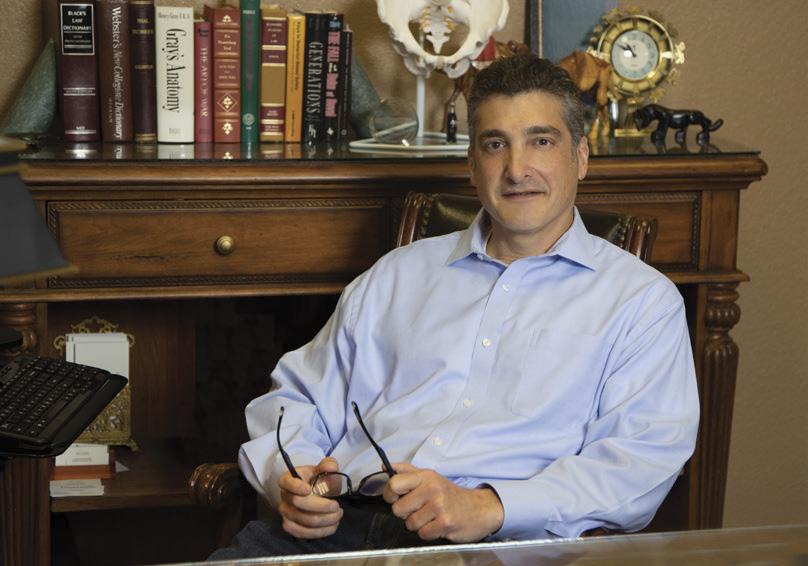
and he was convicted of violating state law. He appealed his conviction to the United States Supreme Court. Daniel Webster represented McCulloch, and William Pinkney served as lead attorney for the State of Maryland. The case raised a fundamental issue about the relationship of states to the federal government: If a state could tax a federal bank, what was the extent of federal supremacy?
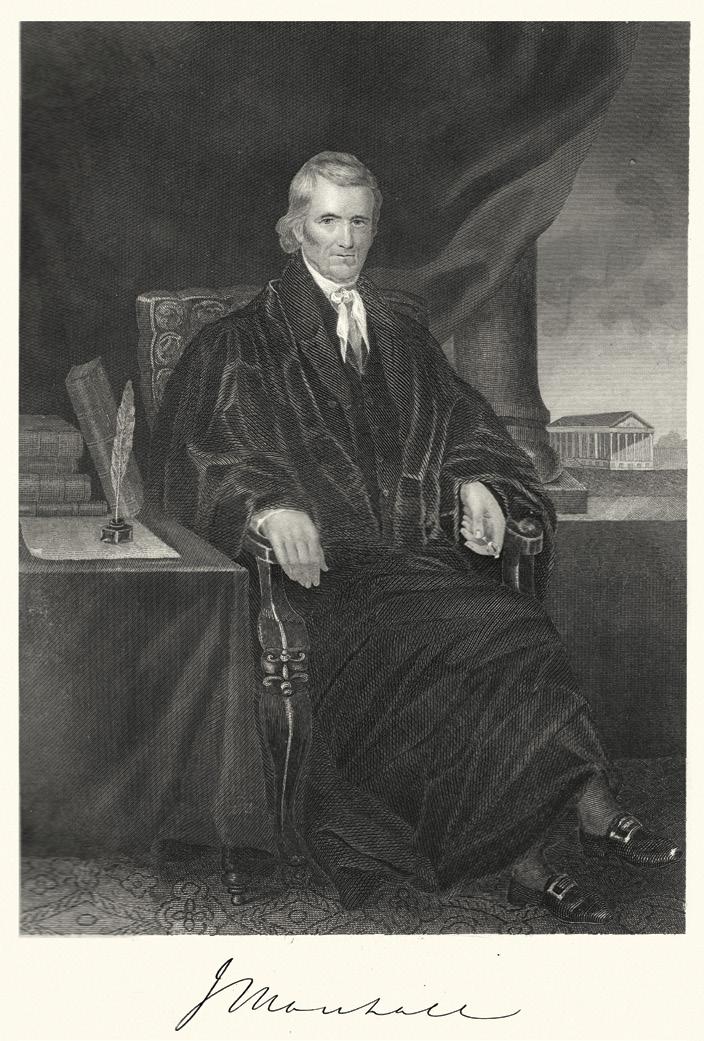
In a unanimous decision, Marshall answered two questions: (1) Does the federal government have the authority to charter a national bank; and (2) Does a state have the power to tax a federal bank? He reasoned that, although the Constitution does not explicitly give the federal government authority to charter a national bank, the document should be read broadly because it gives Congress “all necessary and proper” powers to carry out its express powers. Marshall believed that if the ends are legitimate, then any means used by the federal government to achieve those ends are also legitimate. He explained that because a national bank enabled Congress to tax and spend, Congress had the power to charter a national bank because it has explicit power to tax and spend.
Maryland argued that even if the national bank is legal, the state could still tax it. Marshall disagreed, ruling that the power to tax is the power to destroy, so states have no authority to tax a national bank because of the Supremacy Clause. Marshall’s decision in McCulloch reinforced slave states’ worst fears that the federal government might someday use its supremacy power to outlaw slavery.
Gibbons v. Ogden. 14
The next important case the Marshall Court heard involved the power of Congress to regulate interstate commerce. Known as the great steamboat case, Gibbons v. Ogden established the doctrine that Congress’s power to regulate interstate commerce includes the right to regulate navigation on United States waterways. Gibbons and Ogden were partners in a business that took passengers from New York to New Jersey. They had a dispute, and Gibbons withdrew from the partnership and opened his own steamboat company under a federal license. Ogden sued in New York court and won an injunction against Gibbons, who appealed the state court judgment to the United States Supreme Court. The case raised two issues: does Congress have the power to regulate navigation, and can the federal government regulate navigation within the waterways of New York state?
Daniel Webster represented Gibbons and argued that Congress’s power to regulate interstate commerce is comprehensive and
exclusive. Ogden’s attorney pointed out that the Constitution does not forbid states from regulating commerce within their own waters, and that restricting navigation does not equate to prohibiting commerce. Marshall, writing for the Court, rejected a narrow reading of the Constitution, holding that limiting Congress’s power would cripple the federal government. He wrote that Article I gives Congress broad powers to regulate interstate commerce and defined “commerce” as all commercial transactions, including navigation. Gibbons v. Ogden gave the federal government primary jurisdiction over interstate commerce and made state law subordinate to federal law.
The winter of 1835 was severe, and the roads were icy when Marshall traveled through Virginia on his way home from Washington, D.C. His coach hit a patch of ice and rolled over, injuring Marshall. He sought medical care in Philadelphia, and the physicians who examined Marshall determined that he had an enlarged liver with abscesses that prevented him from eating properly. Marshall lived a few more weeks and died on July 6, 1835.15
Marshall served on the Court for thirty-four years and introduced the practice of issuing majority opinions rather than allowing each Justice to write individual opinions, as done in England. During his tenure, the Court issued over one thousand opinions, and Marshall authored more than half of them. Marshall believed the United States Constitution should evolve to meet the needs of later generations, and he strongly defended the separation of powers, the sanctity of contracts, and the supremacy of federal law over state law.

Harry Munsinger is the author of Texas Divorce Guide, The History of Marriage and Divorce, History of Inheritance Law, History of Medical Miracles, and Portraits of Leadership He has served on the San Antonio Bar Association’s publications committee for many years. During that time, he has been a frequent contributor to the San Antonio Lawyer magazine. Although now retired from law practice, Harry continues to contribute to this magazine!
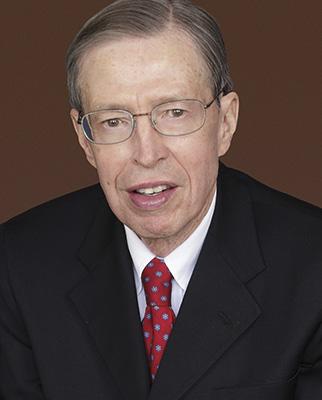
1Historic Valley Forge: John Marshall, U.S. History.org, https://www.ushistory.org/valleyforge/served/marshall.html
2Id
3A Biography of George Wythe 1726-1806, American History, www.let.rug.nl/usa/biographies/georgewythe/
4Office of the Historian, The XYZ Affair and the QuasiWar with France, 1798-1800, https://history.state. gov/milestones/1784-1800/xyz
5John Marshall, Secretary of State, United States Department of State, https://2001-2009.state.gov/secretary/former/40904.htm
6Josh Clark, Thomas Jefferson and the Barbary Pirates, How Stuff Works, https://history.howstuffworks. com/history-vs-myth/first-terrorist-threat2.htm.
7John Marshall, Chief Justice of the United States, Britannica, https://www.britannica.com/biography/ John-Marshall
8Talbot v. Seeman, 5 U.S. 1 (1801).
9Marbury v. Madison, 5 U.S. 137 (1903).
10Historic Valley Forge: John Marshall, U.S. History. org, https://www.ushistory.org/valleyforge/served/ marshall.html
11The Schooner Exchange v. McFaddon, 11 U.S. 116 (1812).
12Martin v. Hunter’s Lessee, 14 U.S. 304 (1816).
13McCulloch v. Maryland, 17 U.S. 316 (1819).
14Gibbon v. Ogden, 22 U.S. 1 (1824).
15Historic Valley Forge: John Marshall, U.S. History. org, https//www.ushistory.org/valleyforge/served/ marshall.html

Nearly 200,000 non-family civil cases were filed in the state courts of Texas in fiscal year 2021. During a similar period (calendar year 2021), only 19,335 civil cases were filed in the federal courts of Texas. It is thus hardly surprising that many civil litigators are less comfortable practicing in federal court than they are in state court. For those who practice business and commercial litigation, the multi-volume treatise Business and Commercial Litigation in Federal Courts, now in its Fifth Edition, provides a thorough guide to both the procedure and the substance of federal court litigation.
Since San Antonio Lawyer reviewed the Fourth Edition in 2017, the series has again been substantially expanded, including the addition of 26 new chapters, for a total of 180 chapters.1 In addition, each of the existing chapters has been updated, including seamlessly integrating information from the annual pocket parts.
Editor-in-Chief Robert L. Haig worked with 373 principal authors, including 32 judges (including Texas Judges George C. Hanks Jr., David Hittner, and Barbara Lynn), and such Texas luminaries as Thomas Ajamie, Charles L. “Chip” Babcock, David Beck, David Coale, Layne Kruse, Mary-Olga Lovett, and Harry Reasoner. (Unfortunately, no San Antonio lawyers made the author list.) Despite the number of authors, Mr. Haig has succeeded in standardizing the chapters, each of which includes the practical scope of the topic with cross-references to the specific sections, an informative essay with authoritative footnotes, and practice aids, including a checklist of key issues, sample forms, and, where applicable, jury instructions.
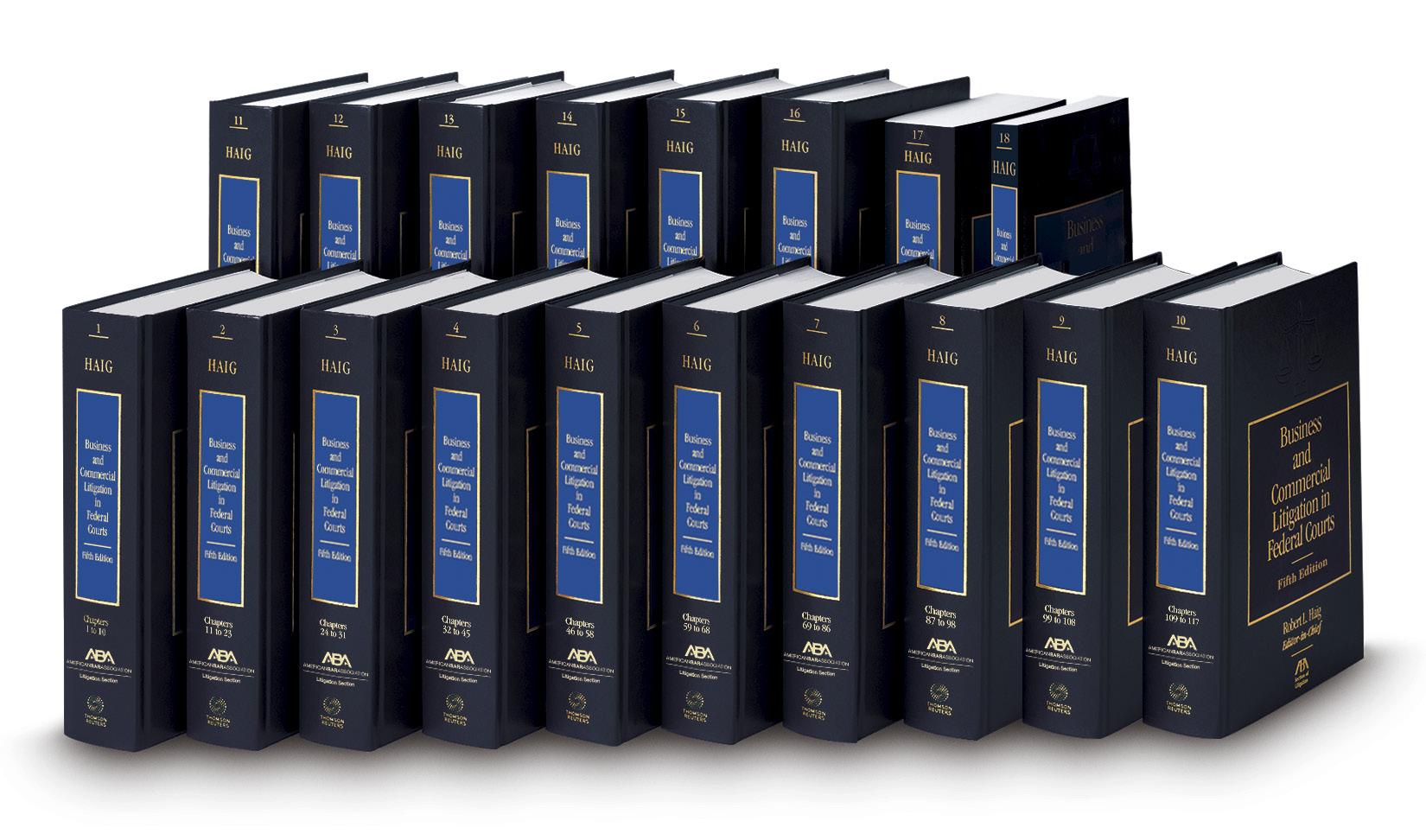
The first eighty-six chapters of the Treatise cover procedural and practical considerations such as jurisdiction, venue, pleadings, thirdparty practice, removal, joinder and severance, remedies, parties, discovery, motions practice, settlement, trial, judgments, and appeals. As an example of the depth of the treatment on these
topics, “trial” is covered by separate chapters on jury selection and consultants, opening statements, strategy, case presentation, expert witnesses, evidence, and closing arguments.
Chapters 87 through 180 cover substantive topics likely to be litigated in federal court. These chapters cover traditional subject matters such as antitrust, admiralty, insurance, intellectual property, labor and employment, ERISA, RICO, white collar crime, Foreign Corrupt Practices Act, government contracts, and tax. But there are also chapters on corporate issues (such as Corporate Litigation Reporting Obligations, Regulatory Litigation with the SEC, Commodities and Futures, Director and Officer Liability, Executive Compensation, and Fiduciary Duty Litigation), Money Laundering, Sports, Entertainment Law, Art Law, and E-Commerce. Of particular interest to the Texas practitioner, one of the new chapters is Comparison with Business and Commercial Litigation in Mexico, and there are also updated chapters on energy and environmental litigation. These substantive chapters are useful both as a step-by-step guide for litigating these areas of law and as an introduction to the covered topics. For example, if I knew I was having a meeting with a client facing a ”Space Law” issue, I could review that portion of the Treatise to familiarize myself with the issues.
For those who litigate commercial cases involving Delaware corporations, the new
chapter Comparison with Business and Commercial Litigation in Delaware Courts is very helpful. As described in its introduction, the chapter “explores the procedural and substantive differences between business and commercial litigation in Delaware and federal courts in order to provide a practical guide for business litigators who may be choosing between the two jurisdictions.” The chapter includes a lengthy discussion of Delaware books and records actions that includes the bases for bringing such an action, the process for initiating one, and a substantive discussion of the required “proper purpose.”
The Treatise is available both as a set of eighteen books and as an ebook edition. I opted for the ebook edition in the interest of saving shelf space and, theoretically, making the Treatise more easily available to my colleagues. Unfortunately, I found the ebook edition to be somewhat difficult to read on the screen (too much scrolling required). The ebook is connected to my Thompson Reuters OnePass profile and located in a Thomson Reuters ProView viewer so sharing it with my colleagues is not as simple as having the Treatise on a shared server. While I can share portions from within the viewer, the link generated requires the recipient to sign into Westlaw. Overall, I recommend making room in your office for the physical books.
1The 25 new chapter subjects are: Animal Law; Art Law; Artificial Intelligence; Budgeting and Controlling Costs; Climate Change; Comparison with Business and Commercial Litigation in Delaware Courts; Comparison with Business and Commercial Litigation in New York Courts; Comparison with Business and Commercial Litigation in Canada; Comparison with Business and Commercial Litigation in Mexico; Congressional Investigations; Constitutional Litigation; Coordinating Counsel; Corporate Litigation Reporting Obligations; Corporate Sustainability and ESG; Fee Arrangements; Fraudulent Transfer; Litigation Management by Judges; Monitorships; Political Law; Shareholder Activism; Space Law; Third-Party Litigation Funding; Trade Associations; Use of Jury Consultants; Valuation of a Business; and Virtual Currencies.
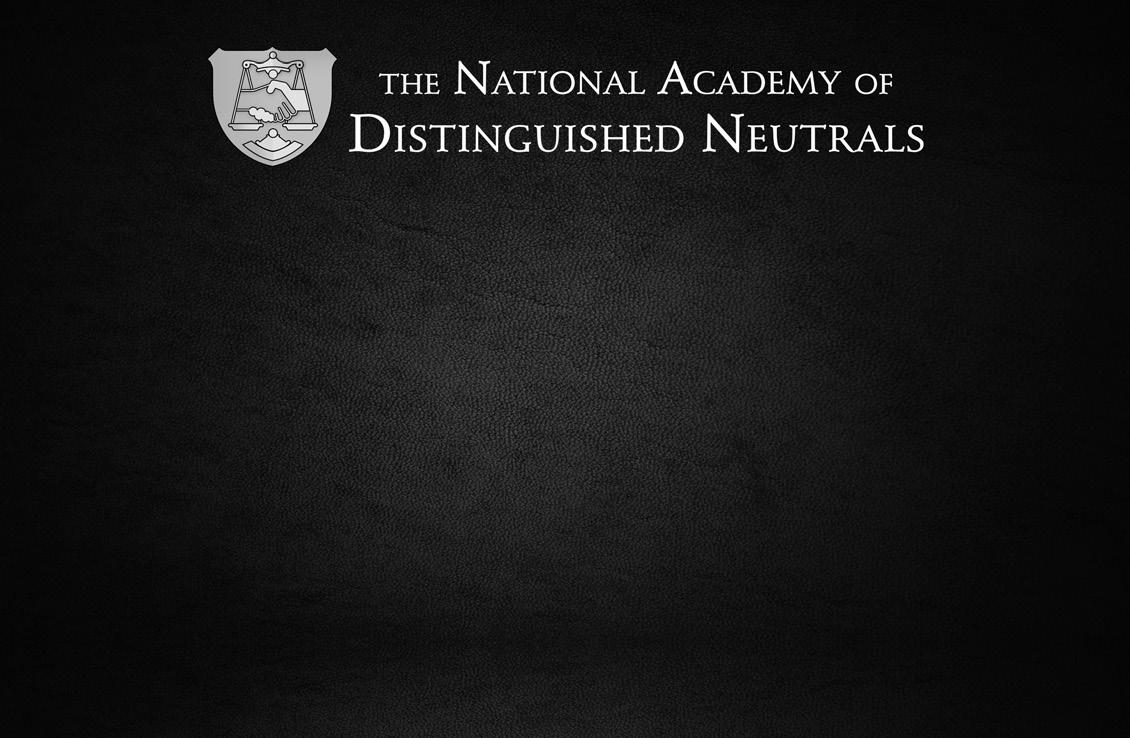
Providing business exit strategy (planning) and forensic accounting (damage control) in disputes over death, business “divorce” and succession.
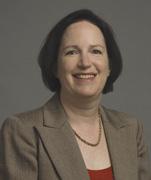

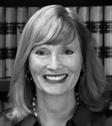




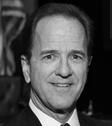
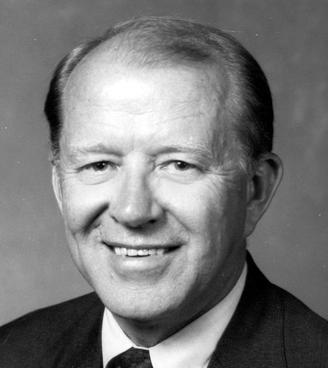
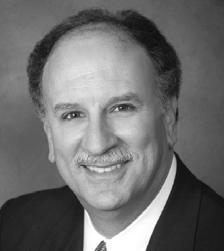

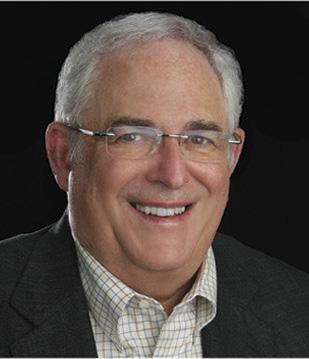
44 years of experience assisting business owners, lawyers, judges and juries with complicated accounting and tax matters.

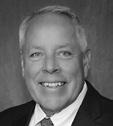
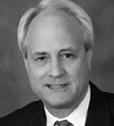
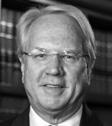
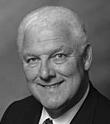
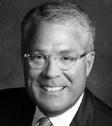
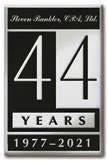


Leslie Hyman is a partner with Pulman, Cappuccio, & Pullen, LLP, where she focuses on commercial litigation, bankruptcy, and appeals.
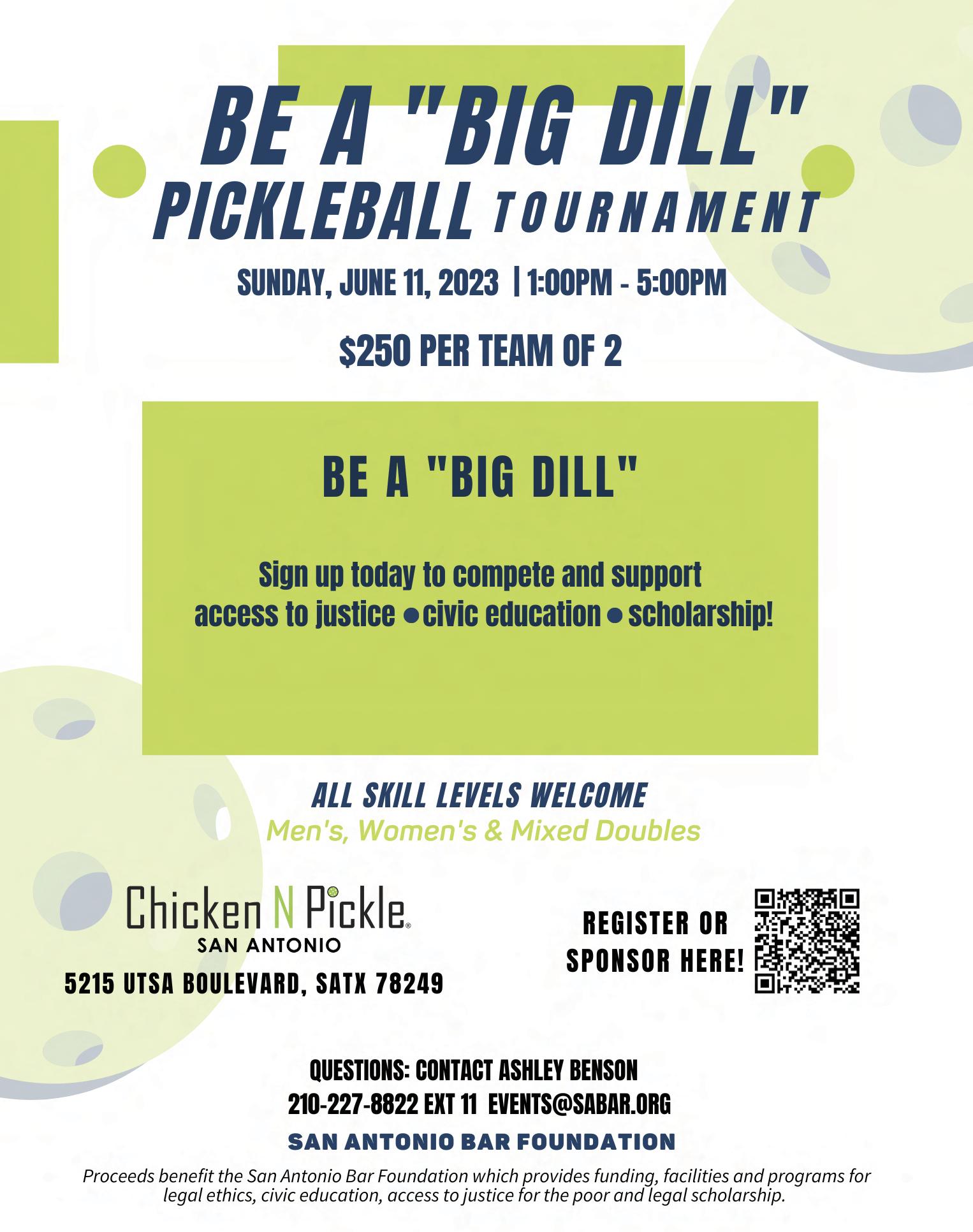
Generally, if a party seeks to alter a trial court’s judgment, that party must file a notice of appeal. Tex. R. App. P. 25.1(c). In the case of an attorney who seeks appellate review of sanctions imposed on him or her by the trial court, that attorney must join the client’s notice of appeal or file a separate notice. If either step is not taken, the attorney’s complaint regarding the judgment is procedurally defective. See State ex rel. Durden v. Shahan, 648 S.W.3d 339, 343–44 (Tex. App.—San Antonio 2021), aff’d in part, rev’d in part and remanded, No. 21-1003, 2022 WL 17998216 (Tex. Dec. 30, 2022). But, despite the procedural defect, can an appellate court still consider the case on its merits? In a recent per curiam opinion, the Supreme Court of Texas said, “Yes.” State ex rel. Durden v. Shahan, No. 21-1003, 2022 WL 17998216, at *3 (Tex. Dec. 30, 2022).
The underlying three suits were filed by Todd Durden in his official capacity as Kinney County Attorney. Among other things, Durden claimed that when Kinney County officials reduced his salary, they violated provisions of the Open Meetings Act, the Local Government Code, and Durden’s due process rights. On summary judgment, the trial court concluded Durden had no legal authority to bring the civil suits on behalf of the State, and it sanctioned Durden personally by ordering him to pay the defendants’ attorney’s fees and costs.
Durden filed notices of appeal—and later, notices of accelerated appeal—identifying the State of Texas as the appellant and Durden, in his official capacity, as the State’s attorney. Durden did not file notices of appeal in his individual capacity. Durden’s notices of appeal also included the following statement: “This is a comprehensive appeal of all issues and as to all parties affected by the [final order].” The Fourth Court of Appeals affirmed the trial court’s judgments on the issue of legal authority, but it dismissed Durden’s sanctions complaints for want of jurisdiction because Durden failed to file notices of appeal in his individual capacity. Durden, 648 S.W.3d at 346–47.
The Supreme Court of Texas agreed that Durden lacked authority to initiate the suits on behalf of the State and acknowledged that Durden’s attempts to appeal the sanctions were procedurally defective. Durden, 2022 WL 17998216, at *3. But the Supreme Court disagreed with the dismissal of Durden’s sanctions issues. It noted that Durden’s “notices expressly described his intent to appeal ‘all issues and as to all parties affected by the Order, which dismisses this case for want of jurisdiction and taxes costs.’” Id. The Supreme Court added that “the parties undoubtedly understood that the sanctions orders were at issue on appeal, and thus there is no question of unfair surprise or confusion.” Id. Durden’s briefs argued against the sanctions. Likewise, “defendants responded to Durden’s arguments in their own briefs, urging the court of appeals to uphold the sanctions orders.” Id. The Supreme Court then concluded that “Durden made a ‘bona fide’ attempt to invoke appellate jurisdiction over the sanctions orders.” Id.
Durden shows the Supreme Court’s insistence “that appeals should be decided on the merits rather than dismissed for a procedural defect, and a failure to comply with procedural formalities need not cause inevitable dismissal.” Id. The Durden “bona fide” exception to Rule 25.1(c) would appear to apply only when (a) a party to a judgment does not file its own
notice of appeal on a complaint that the party intended for the appellate court to address, (b) the record shows that all parties understood that the party’s complaint was at issue on appeal, and (c) the party to the judgment makes a bona fide attempt to invoke appellate jurisdiction. So long as the appellate court has jurisdiction (i.e., a timely-filed notice of appeal or petition for review), an attorney who wants to challenge individual sanctions, but who did not file or join a notice of appeal individually, may be saved by the Durden party exception.
Although the Durden party exception may—in the end—preserve a party’s appeal of individual sanctions, the better practice is to simply file or join a notice of appeal in one’s individual capacity.
Justice Patricia O’Connell Alvarez is Board Certified in Personal Injury Trial Law and is a member of many organizations, including the American Board of Trial Advocates. She dedicates her free time to mentoring law students in the art of trial and appellate advocacy.

We can help with:
• HIPPA Compliance (TX HB300 applies)
• Cloud: storage, files, computers, servers
• Computers: repairs, upgrades, purchases, encryption
• Servers: setup, repairs, maintenance, purchases
• Email: domains, migration, backup, encryption
• Office 365: email, OneDrive, backup and Office software
• VoIP phones: includes Quality of Service (QoS) and backup internet
• Network: devices, setup, repairs, maintenance
• Call when you need us or customized service options available
• Remote and on-site support, antivirus programs, virus removal, maintenance
www.pstus.com 210-385-4287

If you are aware of a Western District of Texas order that you believe would be of interest to the local bar and should be summarized in this column, please contact Soledad Valenciano (svalenciano@svtxlaw.com, 210-787-4654) or Melanie Fry (mfry@dykema.com, 210-554-5500) with the style and cause number of the case, and the entry date and docket number of the order.
Orange Beacon Mktg., LLC v. Outstanding Real Estate Sols., Inc., SA-22-CV-00570-FB (Chestney, E., November 9, 2022).
The court approved the plaintiff’s motion for substituted service under FRCP 4(e) after reviewing the plaintiff’s motion and response to show cause order as to why the plaintiff’s case should not be dismissed for want of prosecution. The process server’s affidavit showed five failed attempts on defendant’s registered agent and how investigation as to agent’s whereabouts had proven futile. Rule 4(e) provides that an individual may be served in a judicial district of the United States by following state law for serving a summons in an action brought in courts of general jurisdiction in the state where the district court is located. Following TRCP 106(b), and considering the process server’s affidavit that personal service could not be reasonably effectuated on the defendant’s registered agent, the court granted service: (1) by registered or certified mail, return receipt requested on the agent; (2) via the defendant’s attorney; (3) through social media (here, Facebook); (4) via email; and (5) using any other technology that would give the defendant reasonable notice as permitted under TRCP 106 and FRCP 4(e).
Mandawala v. Baptist Sch. Of Health Pros., No. SA-19-CV-01415-JKP (Pulliam, J., December 21, 2022)
The plaintiff student failed a medical school sonography program. After multiple appeals to the Fifth Circuit on other grounds, the student moved for judgment on the pleadings, alleging the defendant school missed its answer deadline and violated the rule on successive motions to dismiss. The school moved for summary judgment on the student’s claims
for sex discrimination and breach of contract. The court explained that the school did not fail to answer when it properly filed its FRCP 12(b)(6) motion to dismiss before it filed its answer and that the school did not violate the rule on successive motions to dismiss when, as here, the second motion was in response to an amended complaint. The school’s answer to the amended complaint was not untimely as a party’s responsive pleading is due fourteen (14) days after notice of the court’s action on a Rule 12 motion. The court added that even if an answer is untimely, a party is not entitled to a default judgment as a matter of right. Accordingly, the court denied the student’s motion for judgment on the pleadings. The school moved for sanctions against the student for not making his initial disclosures and not timely responding to discovery. Because the student’s delay was neither justified nor harmless, the student’s evidence was subject to exclusion under Rule 37(c)(1); however, such exclusion was moot because it was not relied upon by the student in his response to the school’s summary judgment motion. Dismissal of the case as a discovery sanction is permitted when a party has the ability to comply but willfully refuses to do so; however, here, the court determined such a harsh sanction need not be imposed because the school’s summary judgment motion succeeded on its merits. The court denied the school’s motion for $1,800 in attorney’s fees sought for work related to the student’s untimely discovery responses because the student eventually responded and, thus, did not “fail to respond.” The student failed to meet his prima facie case on sex discrimination, as he produced no evidence demonstrating that discrimination was a substantial or motivating factor in the school’s decision to fail him. Even if he did, and the school then met its burden to provide a non-discriminatory
reason for failing him (i.e., the student did not complete the program’s requirements), the student failed to show that the school’s reason for failing him was pretextual, as none of the witnesses he disclosed were school employees, much less decision makers. The court granted the school’s motion for summary judgment on the student’s breach of contract claim as well, holding no evidence was produced to establish that the sonography program was a contract.
Resea Project Aps v. Restoring Integrity to the Oceans, Inc., No. SA-21-CV-1132-JKP (Pulliam, J., Dec. 15, 2022)
The plaintiff filed a motion for default judgment and a motion for sanctions, also seeking entry of default judgment. The corporate defendant was unrepresented by counsel and did not file any response. The individual defendant (Kelly) had previously answered and proceeded pro se but filed no formal response to the motion for default, instead only filing a response to the motion for sanctions.
On the motion for default, the court noted a clerk’s entry of default does not automatically entitle a plaintiff to default judgment, and the decision to enter a default judgment is ultimately within the sound discretion of the district court. Even though the clerk had entered a default against the unrepresented corporate defendant, the court held that because Kelly remained to defend the action and could establish the plaintiff has no cause of action, the motion would be denied without prejudice to refiling after the case was finally resolved as to all defendants.
The plaintiff had also filed a motion for sanctions seeking entry of default for alleged discovery abuses committed by Kelly for lying, destruction of evidence, and violations of
court orders through allegedly deleting emails. At a prior hearing on a discovery matter, Kelly admitted on the record to deleting emails. However, assuming without deciding that Kelly did in fact delete the emails, as alleged by the plaintiff: (1) dismissal without prejudice is a “sanction of last resort.” and the court should consider lesser sanctions before resorting to the harsh sanction of default judgment; (2) the plaintiff had not requested any lesser sanctions; and (3) the plaintiff had not addressed whether the deleted emails could not be replaced through additional discovery and had not shown why a default was warranted over a presumption that the lost information was unfavorable to Kelly. The court found entry of default judgment as a discovery sanction unwarranted based on the facts presented and, while acknowledging the court’s inherent power to sanction in some circumstances, declined to consider unrequested lesser sanctions noting the plaintiff “overplayed its hand” in seeking only entry of default.
L.B. Benon Fam. L.P. v. Wells Fargo Bank, N.A., No. SA-21-CA-01115-XR (Rodriguez, X., Nov. 7, 2022)
The court dismissed the plaintiffs’ alter ego, agency, and joint liability claims on defendants’ motion to dismiss. In their second amended complaint, the plaintiffs alleged defendants Texas Name and N.F. Mgt. breached their fiduciary duties, both individually and as alter egos and agents of one another. The court held the individual theory of “alter ego liability” was not applicable in this case because, under Texas law, it applies only when there is such unity between corporation and individual that the separateness of the corporation has ceased, and holding only the corporation liable would result in injustice. In this case, the plaintiffs had not asserted claims against any individuals. Therefore, the individual alter ego theory did not apply. Regarding the veil-piercing alter ego liability in the context of corporate entities, because the plaintiffs had not alleged any facts indicating there is a parent-subsidiary relationship between defendants Texas Name and N.F. Mgt., the theory was dismissed. The court further held the plaintiffs had not provided any factual allegations to support their claim that the defendants were agents of one other, and the plaintiffs’ only allegations with regard to the relationship between the parties were that
they have the same CFO, operate out of the same office, and are managed by the same individuals, which did not support an agency theory. Finally, citing Texas law regarding joint liability, the court found disregarding the corporate structure in this case was not appropriate because there was no alleged injustice or inequity such as fraud, criminal conduct, or any other considerations set forth in Castleberry v. Branscum, 721 S.W.2d 270 (Tex. 1986). Mere allegations that they have the same CFO, operate out of the same office, and are managed by the same individuals were insufficient as Texas law does not hold corporations liable for each other’s obligations merely because of centralized control, mutual purposes, and shared finances.
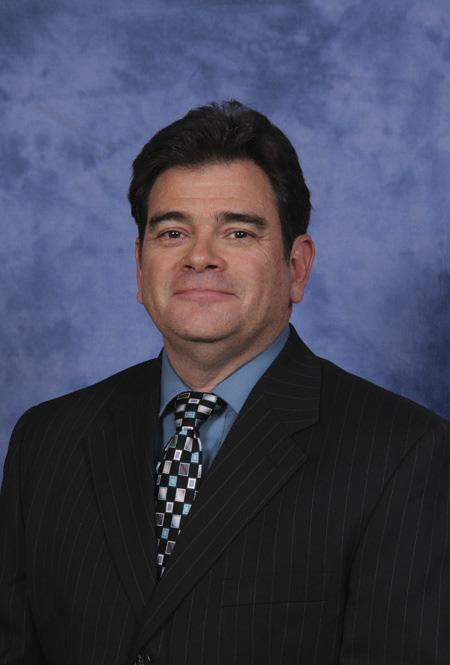
TuYo Holdings, LLC v. Transamerica Life Ins. Co., SA-22-CV-00845-JKP (Pulliam, J., Dec. 6, 2022)
A life insurance beneficiary sold his policy to a third party. The insurer terminated the policy due to alleged non-payment. The third party entered bankruptcy, and the original life insurance beneficiary purchased “all right, title, and interest, to include legal remedies, in the Policy” from the bankruptcy trustee. The beneficiary then sued the insurer for declaratory relief, breach of contract, violations of Texas Insurance Code § 541.151(1), unjust enrichment, and promissory estoppel. The court granted the insurer’s motion to dismiss the Chapter 541 cause of action, holding it may not be assigned. The Texas Supreme Court has not addressed the assignability of claims under the Texas Insurance Code. The court looked to Texas Supreme Court precedent on non-assignability of Deceptive
Trade Practices Act claims, Texas intermediate courts of appeals precedent, and holdings from other federal district courts to conclude that Insurance Code remedies are personal and punitive in nature (not property), the Texas Insurance Code contains no provision for assignability, and Texas Insurance Code damages are intended to encourage suits by aggrieved consumers, only. The court also dismissed the beneficiary’s claims for unjust enrichment and promissory estoppel. Although the parties’ dispute involved actions and documents other than the policy, the dispute was still governed by the terms of the policy. Because the beneficiary did not dispute the validity of the policy, the beneficiary could not assert equitable causes of action.
Plaintiffs v. GainJet Aviation S.A., SA-20CA-01422-XR (Rodriguez, X., Nov. 29, 2022)
The family of a San Antonio resident humanitarian and activist sued Greek private jet operator GainJet for its role in the kidnapping of the activist by the Rwandan government. GainJet had diverted the activist’s flight to Rwanda against his will, after being paid and hired by Rwandan officials. Jurisdictional discovery suggested that GainJet was aware of, or agreed to participate in, the kidnapping of the activist. The activist has been tortured and remains in a Rwandan prison. GainJet moved to dismiss for lack of personal jurisdiction, and plaintiffs sought additional discovery as to what occurred on the aircraft. The plaintiffs asserted that GainJet’s torts began in Texas and continued on the flight, that tortious conduct onboard was “felt in Texas,” and that the Calder “effects test” (jurisdiction against
Florida residents proper in California based on the “effects” of their Florida conduct in California) applied. The court denied the plaintiffs’ motion for additional jurisdictional discovery. A defendant’s participation in a larger conspiracy directed at a Texas resident is
not enough for specific jurisdiction; a plaintiff must show the conspiracy was related to or arose out of the co-conspirator’s purposeful contacts with the forum state. There was no evidence that GainJet ever contacted the activist concerning the flight while he

was still in San Antonio, or that he had any other contact with Texas in furtherance of the conspiracy.
Soledad Valenciano practices commercial and real estate litigation with Spivey Valenciano, PLLC. Melanie Fry practices commercial litigation and appellate law with Dykema Gossett PLLC.
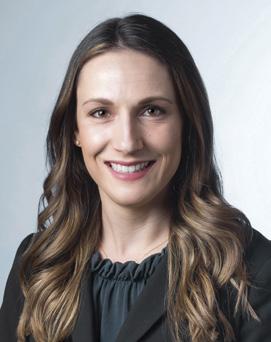

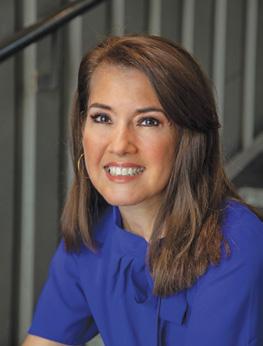
Jeffrie B. Lewis is Assistant General Counsel with Zachry Group.



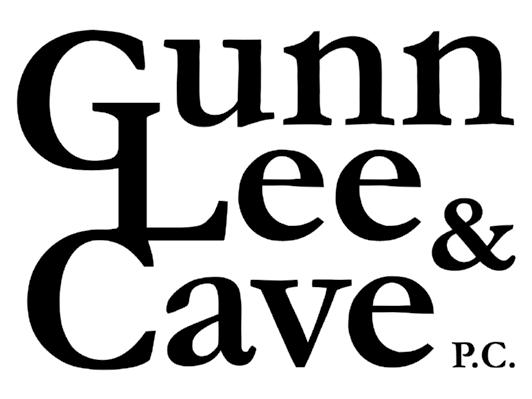
WEALTH & PRIVATE BANKING LINES OF CREDIT
WEALTH & PRIVATE BANKING
Even with thoughtful planning and execution, your circumstances can change and opportunities can arise. As you develop your personal financial plans, consider your options for optimizing success. Strategically access liquidity to capitalize on opportunistic investments or manage your cash flow. With Broadway Bank’s Private Banking Line of Credit1 you will have access to additional funds while you work to reach your goals.
Benefits of Private Banking Line of Credit:
• Lines of credit available from $30,000 to $750,000
• Maximum term of 24 months
• Interest-only payments due monthly
• No collateral required for unsecured lines of credit
Our low-rate secured and unsecured lines of credit are designed exclusively for Private Banking clients. They are an excellent option for accessing the money you need when you need it.

At Broadway Bank we understand the key to building a lasting legacy requires a comprehensive approach to your financial planning. Our team will take the time to learn about your unique circumstances and identify the values most important to you and your family. As a client, you will have a dedicated team of impeccably credentialed professionals to provide thoughtful and custom-tailored advice and guidance.
A Private Bank Line of Credit allows you to:

We offer a wide array of services including:
• Manage your cash flow
• Access funds immediately without approval
• Investment Management
• Trust Administration
• Pay for expenses quickly
• Estate Settlement
• Cover gaps in irregular monthly income
• Foundation Grant Management
• Meet seasonal and/or fluctuating cash demand
• Oil and Gas Mineral Management
• Real Estate Management
• Wealth Advisory Services
• And more
Contact our Private Banking team today to apply. (210) 283-4023 • broadway.bank/private
Let our team help you build your legacy. broadway.bank/wealth • (210) 944-1131